Jordon. Another WOW place.
Huge day. Petra and Wadi Rum
When I was planning this trip I decided to organise a tour that did both the ancient site of Petra and the red desert of Wadi Rum. All good. Found a tour and got onto the internet to find 5 people to join me.
My tour for 6 people was a bit more popular than I thought and we eventually headed off with 120 people.
The two-hour drive was great. Through some great looking country. Not great to farm on but great. Flat and dry and stony desert-y. Small towns along the way and many Bedouin camps. The camp are still mobile but they have trucks now not camel trains. But all had goats and sheep – hard to tell which were which as they were they huge ancient breeds of sheep and the huge goats that looks similar. – Goats tails up, ears down. Sheep – tails down, small ears up. But hard from a distance.
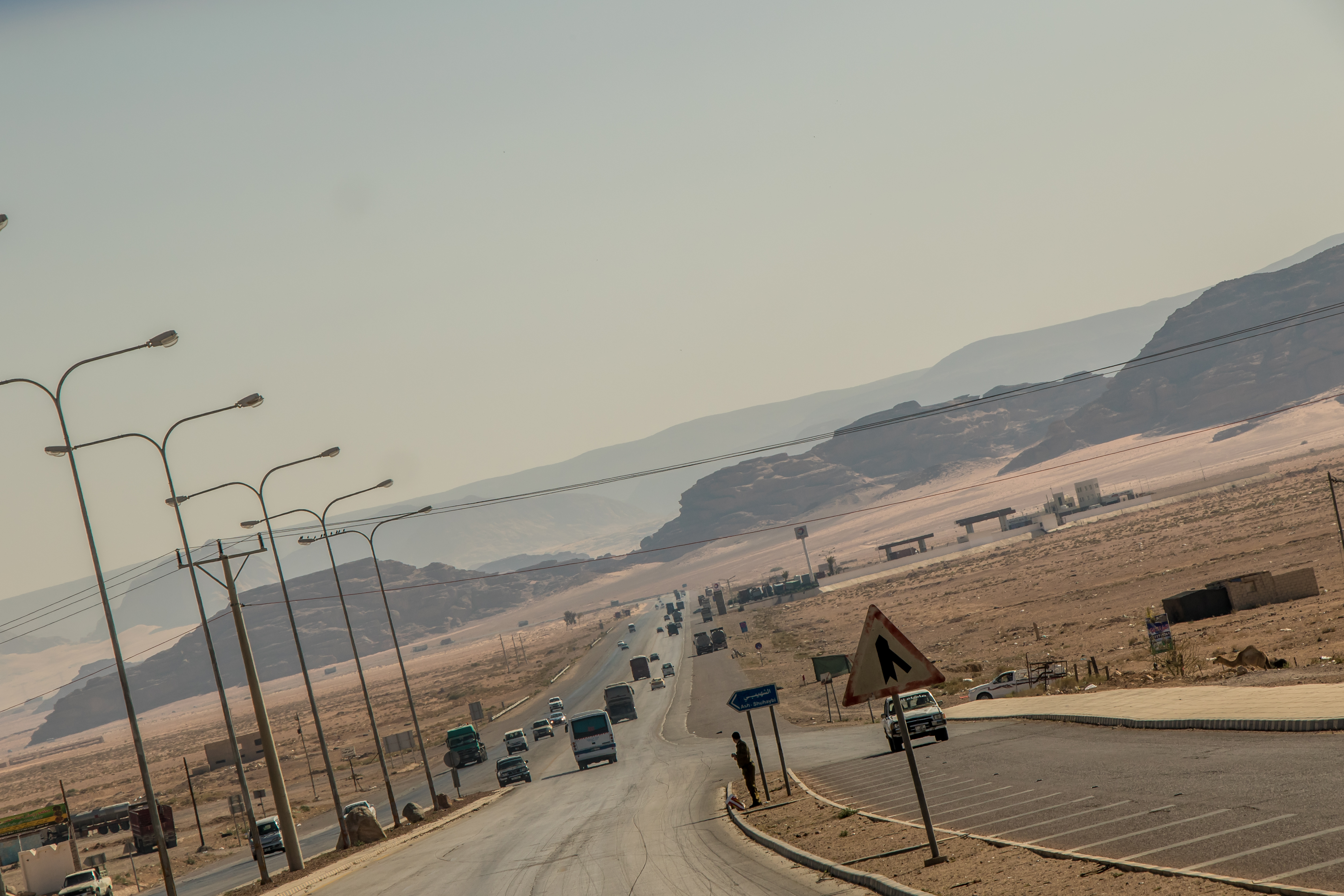
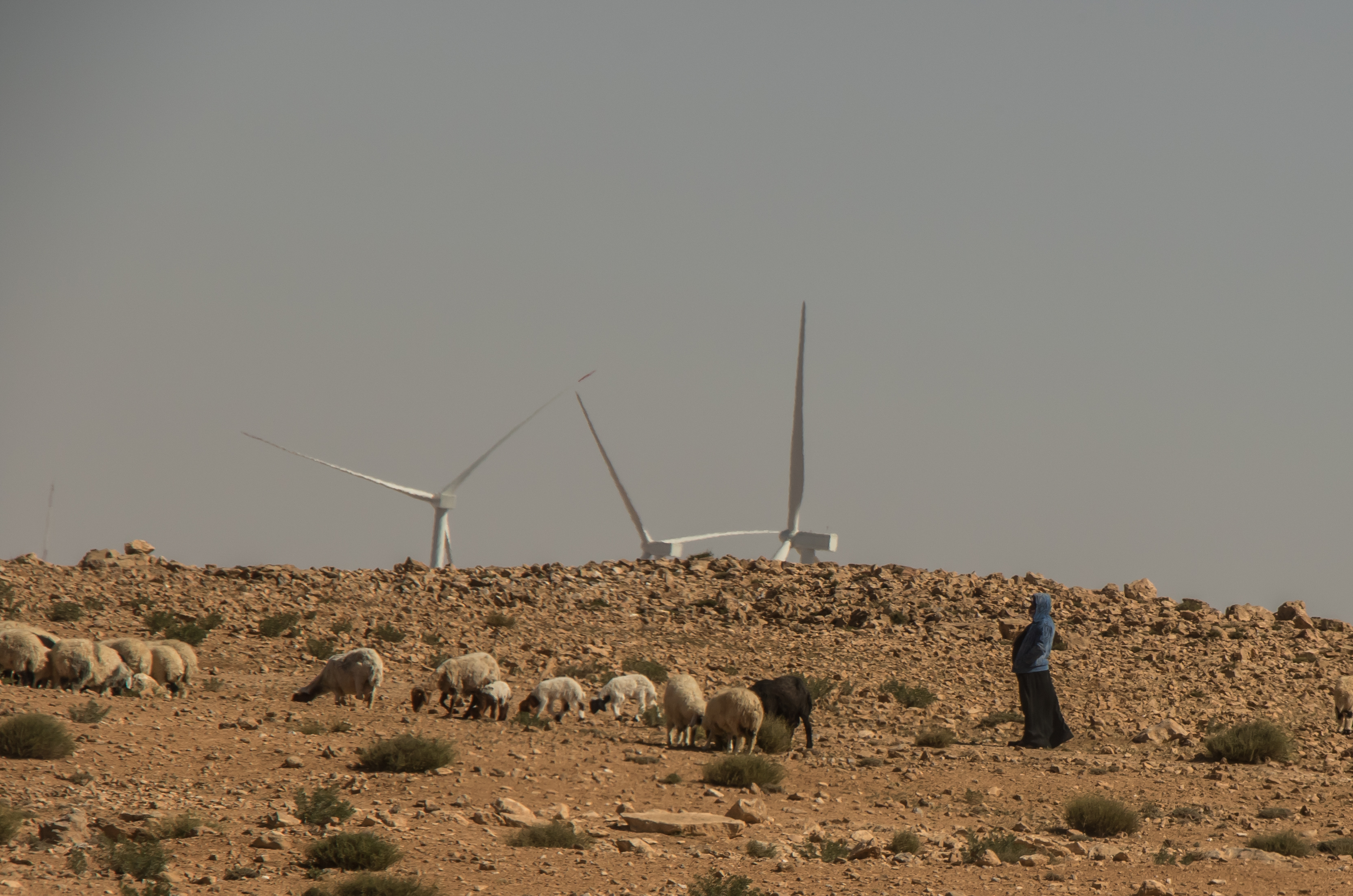
Each flock was out with a person who followed them. Often there was a loaded donkey, grazing behind them. Guess the donkey brought lunch. It was really sad later that day to see a poor young guy dragging a freshly killed goat off the road. Someone had hit it, and didn’t even stop to help him.
We also saw many donkeys and camels.
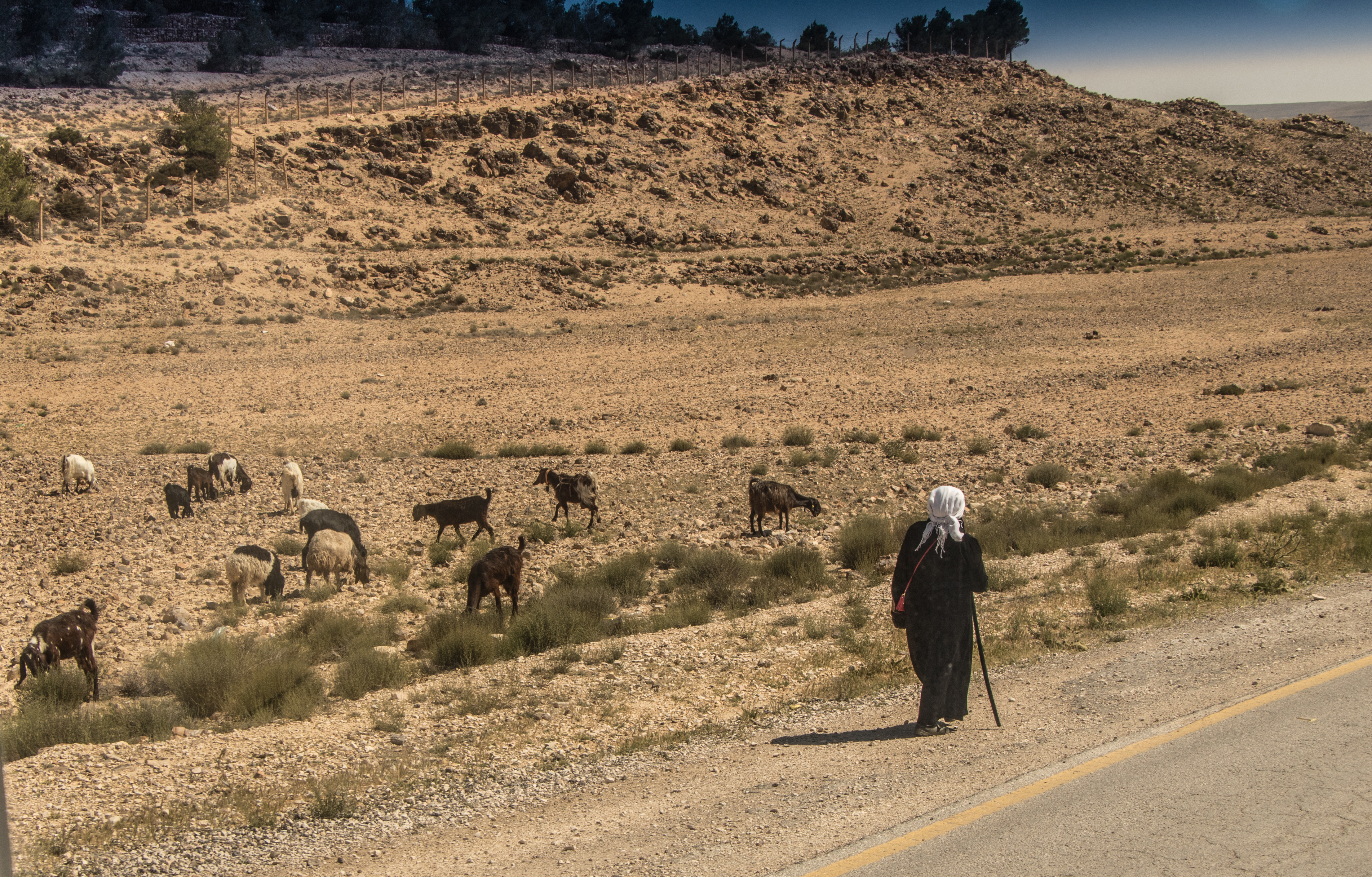
We climbed up a large range (1,500m). Up there was a huge array of wind turbines. About to be commissioned. Awesome.
And a rest stop with killer views. The land had changed and was full of buttress of rock. Both volcanic and sandstone. Looked great. Everywhere around was flat desert then giant rock protrusions. The power of erosion is amazing – but why did this piece of rock survive and this bit turn to sand.
And the sand would change from very red to bright white, with many yellows in between. There were plenty of places mining the very white sand.
Then we arrived in Wadi Musa, the town that supports Petra. It has a population of 7,000 and ALL work somehow for the tourist industry. Hotels, Guides etc.

PETRA (or the Rose City) – is one of the New Seven Wonders of the World. It’s famous for its Rock-Cut Architecture, where they just carved a city into the sandstone cliffs! It was originally known as ‘Raqeem’. The Greeks named in Petra, meaning Rock.
Settled as early as 9,000BC. It’s in a basin and in naturally fortified by the mountains all around. By around 400BC it was the capital city of the Nabataean Kingdom. They were nomadic Arabs who set up here for the trade routes. It became a major trading hub.
In 312BC the Greeks raided the city but the Nabataean were able to keep them out due to their superior desert skills and the terrain.
The Nabataean were “Water Engineers” and were geniuses at harvesting water. They made the area into an oasis with channels, aqueducts, cisterns etc. They were able to collect water to sustain 100,000 people for a year. Many cities cannot manage that today.
The Nabataean Kingdom cover all of today Jordan, Syria, most of Saudi Arabia. It lost its independence when it fell to the Romans in 106 AD.
Sea trade routes opened up and the Silk route lost its importance. Then a series of earthquakes destroyed many structures and it lost all importance. And disappeared to the world.
In 1812 an explorer had heard old Bedouin tales, learnt Arabic, disguised himself as a Bedouin and found it.
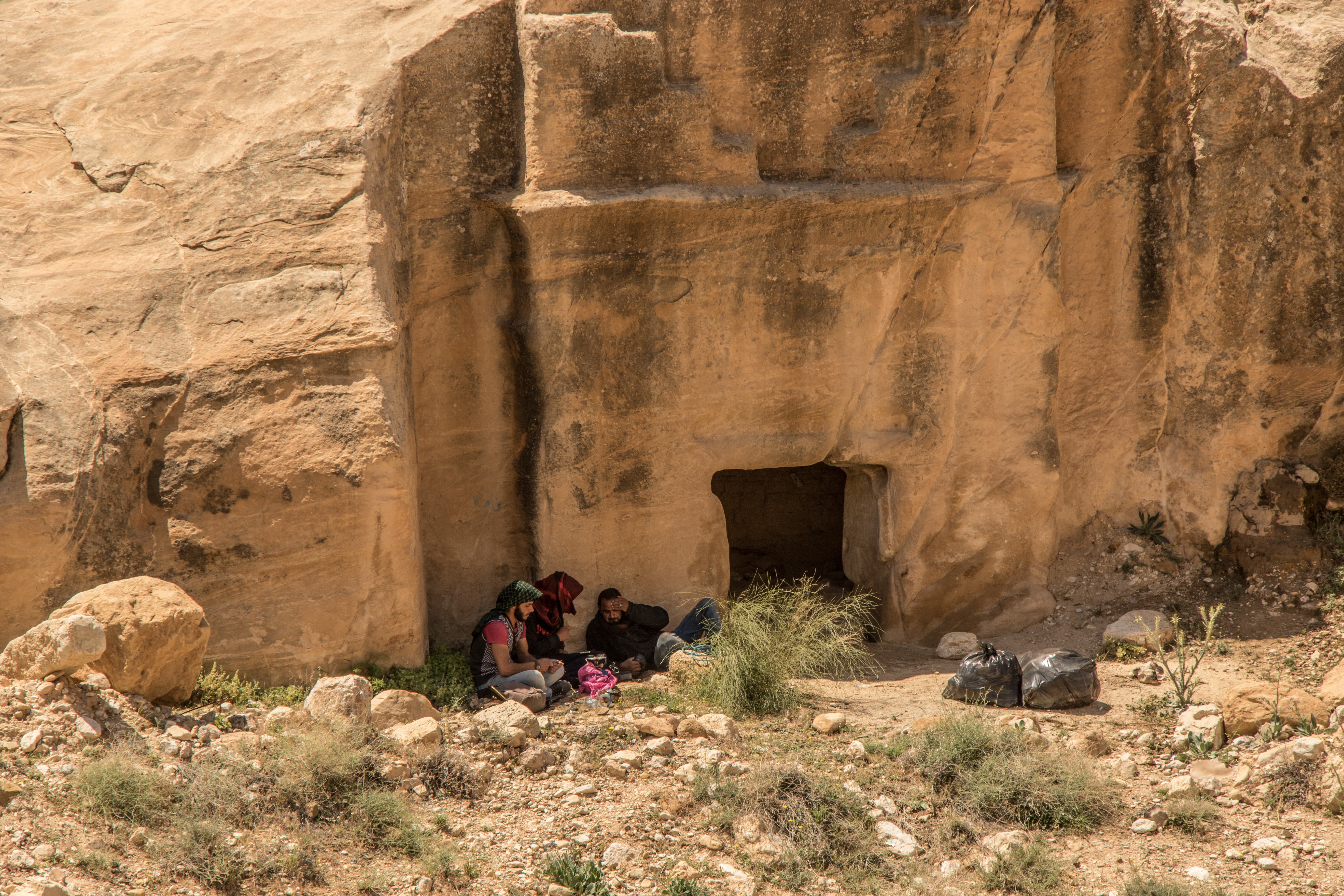
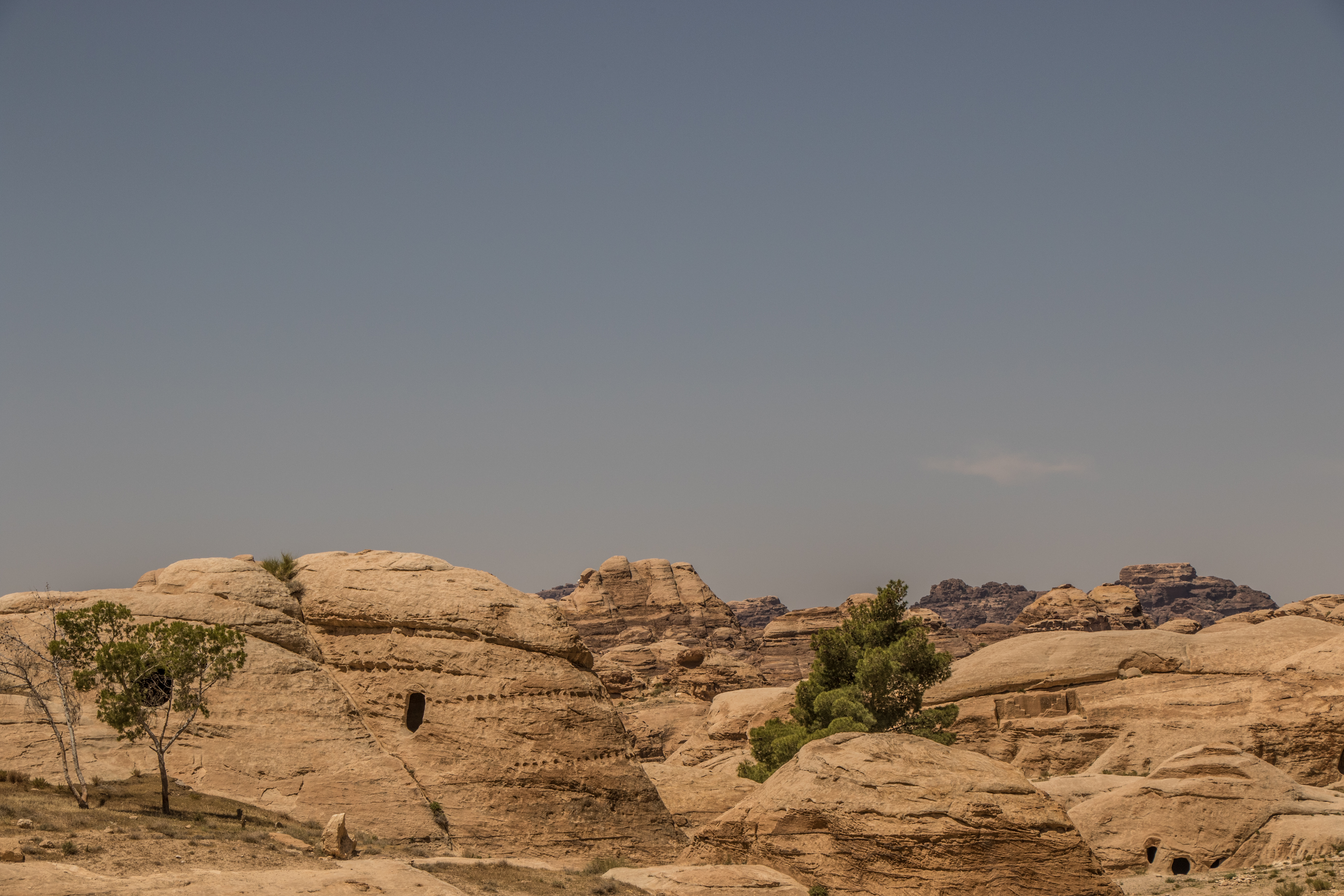
Being lost for so long stopped it being robbed and raided. It became a world heritage site in 1985. UNESCO called it “one of the most precious cultural properties of man’s cultural heritage”, not because of the beauty – because of the engineering.
They believe only 17-20% of Petra has been uncovered.
Lots of Bedouins live in the area and we were asked not to buy from the kids. The parents keep them out of school to sell things – so they go completely uneducated.
You check in at a visitor centre and walk down the hill. About a kilometre long. On a side track are horse and cart rides down to the bottom. The horses take you to the start of the Siq and to the Dam. But too much to see on the way down. Must walk as the tour guide was explaining. All along the way were tombs and mad made caves. As well as many other things.
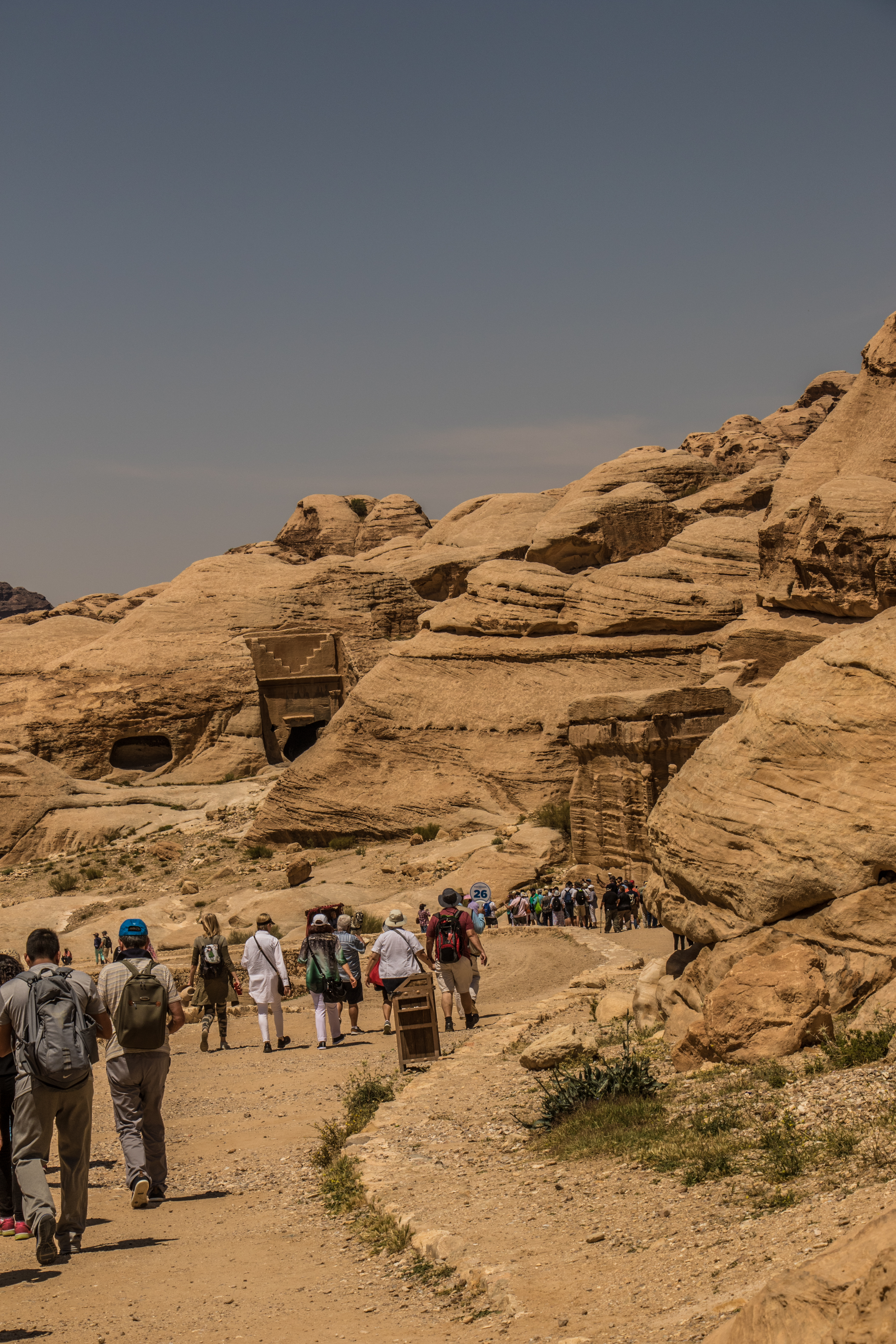
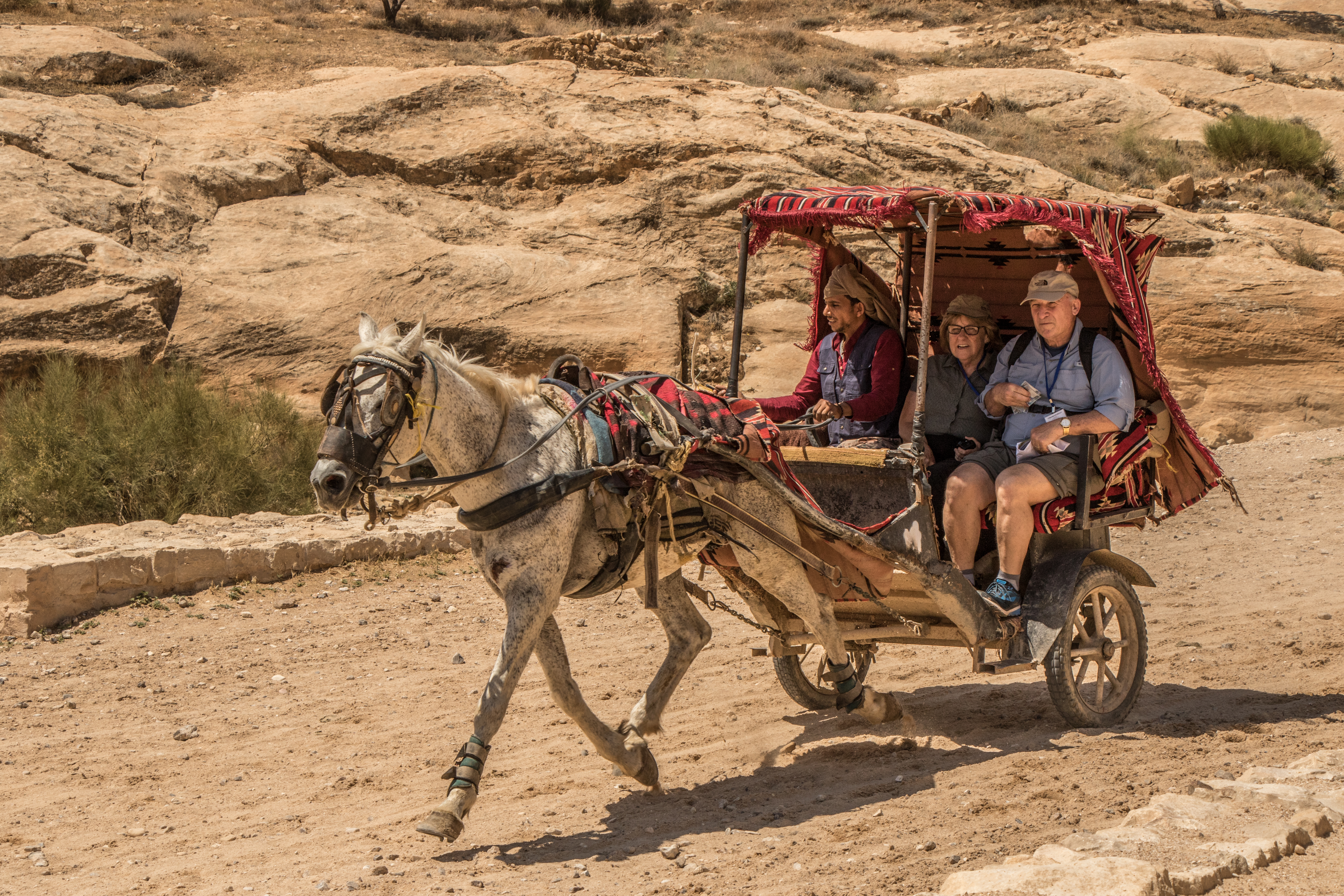
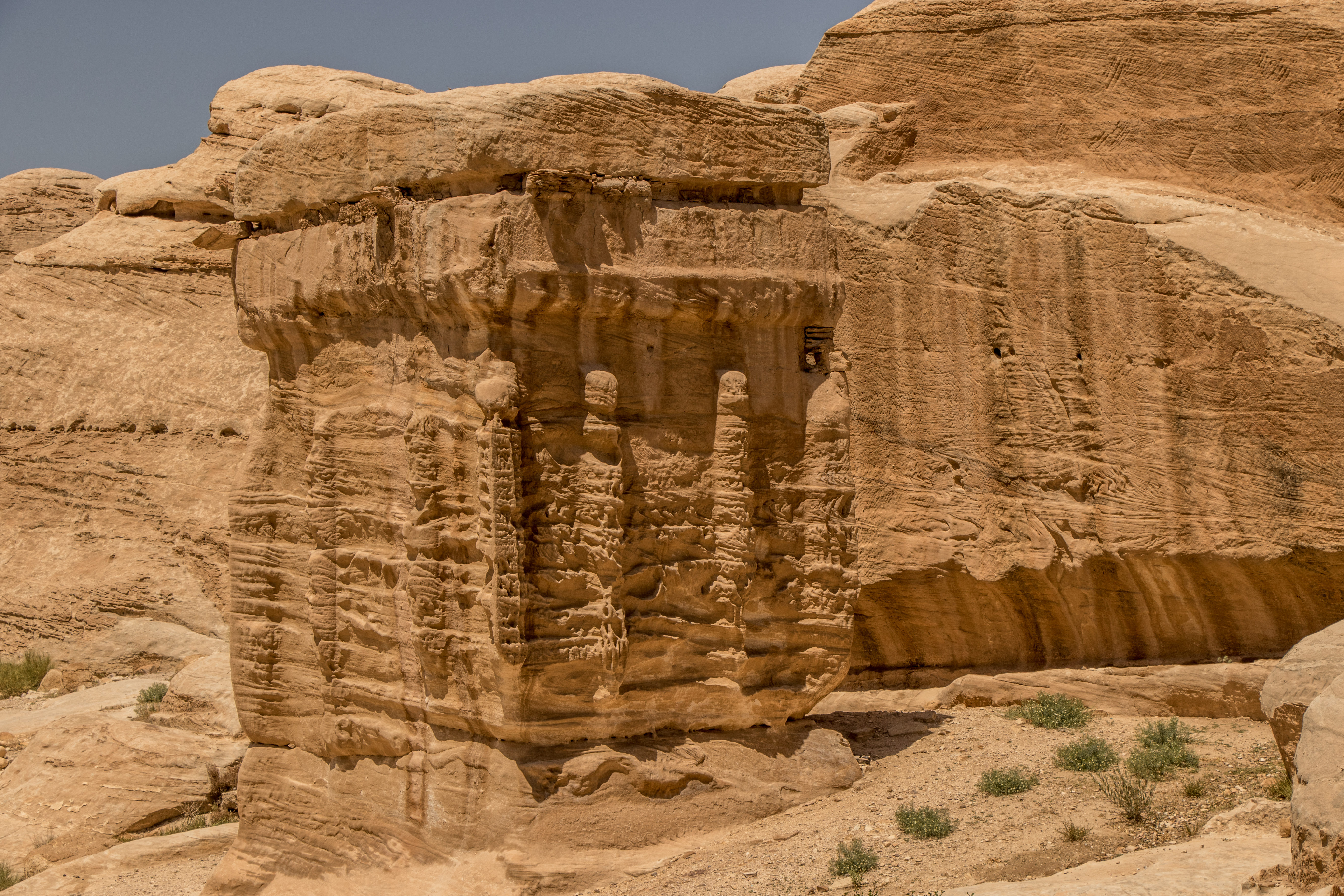
What makes people come and find a savage environment and go “Right, we can do this. Start carving!” And carve a city into mountains. Not caves – cities!
Next was “Bab Al Siq”. As we walked down the ‘Bab Al Siq’, Arabic for gateway to the ‘siq’.
Past three massive Djinn blocks, squared monuments carved out of the rock. Then the Obelisk Tomb, which was carved by the Nabataeans in the 1st century AD. Above the tomb are four pyramids and a niche with a statue. Down from that is the Triclinium, a banqueting hall. In the opposing cliff face there is a double inscription in Nabataean and Greek that refers to a burial monument.
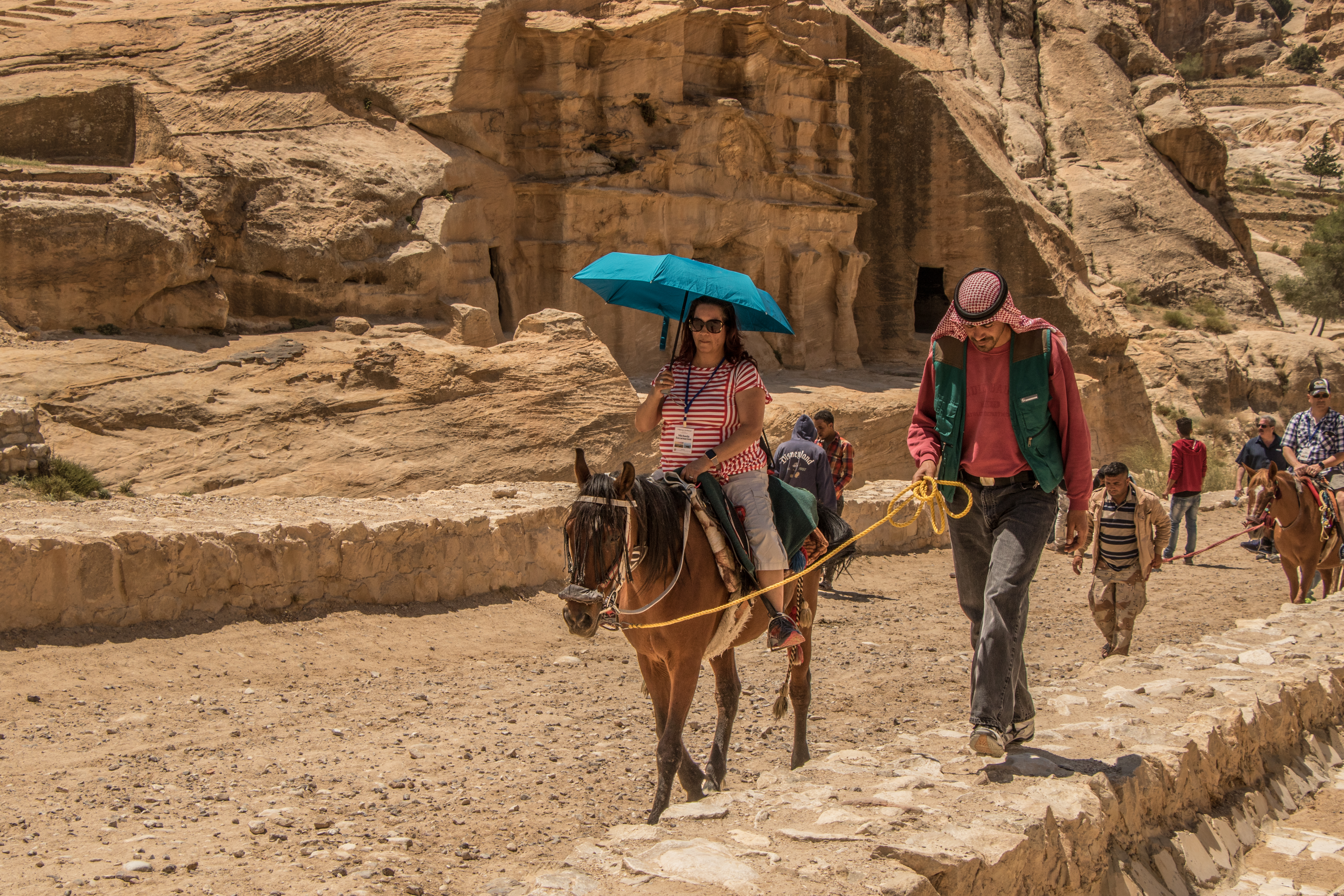
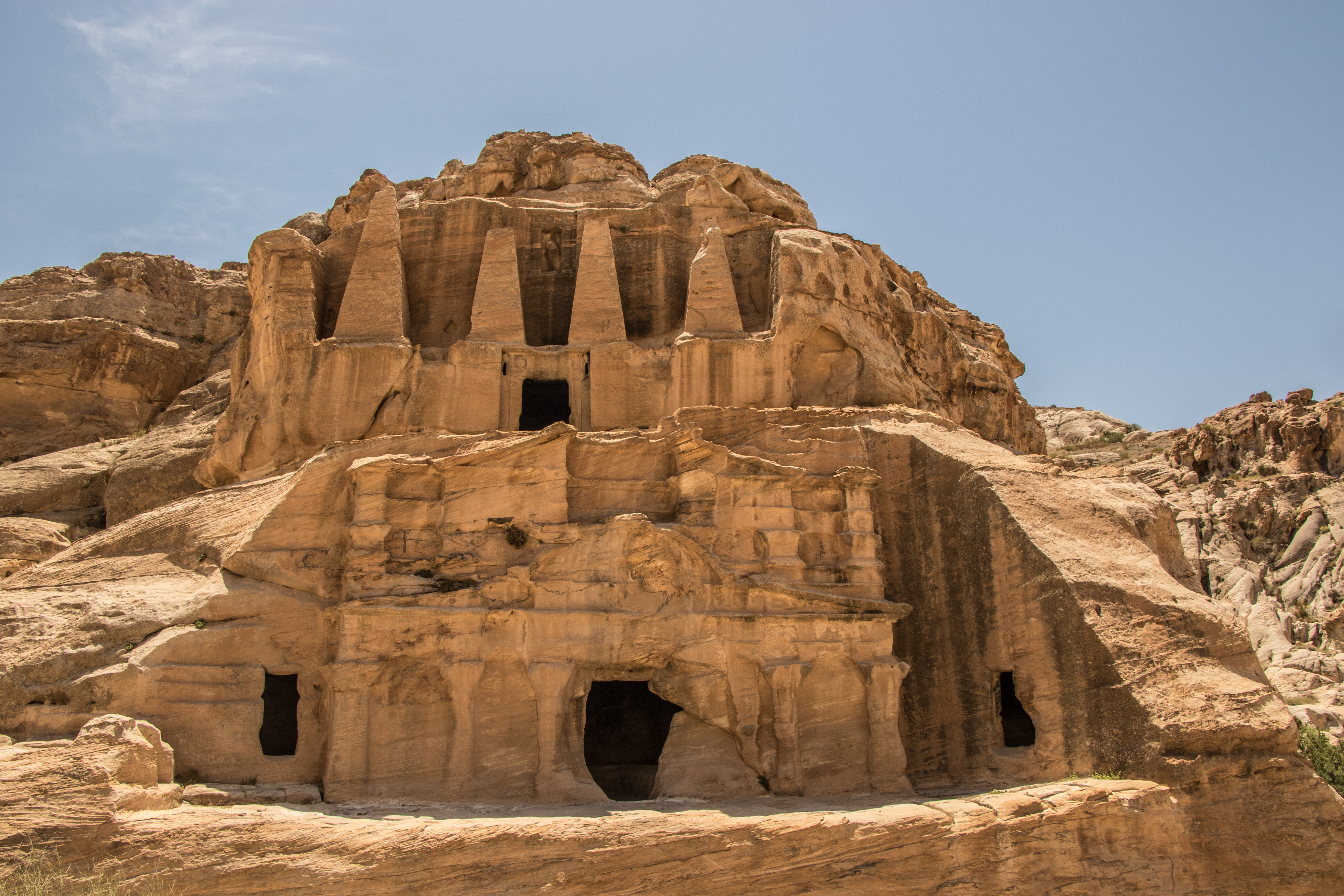

At the bottom was the Dam. It was renovated by the government in 1964 in the same way originally built by the Nabataens. This dam was built to protect their capital from seasonal floods coming from the mountains and hills across the valley.
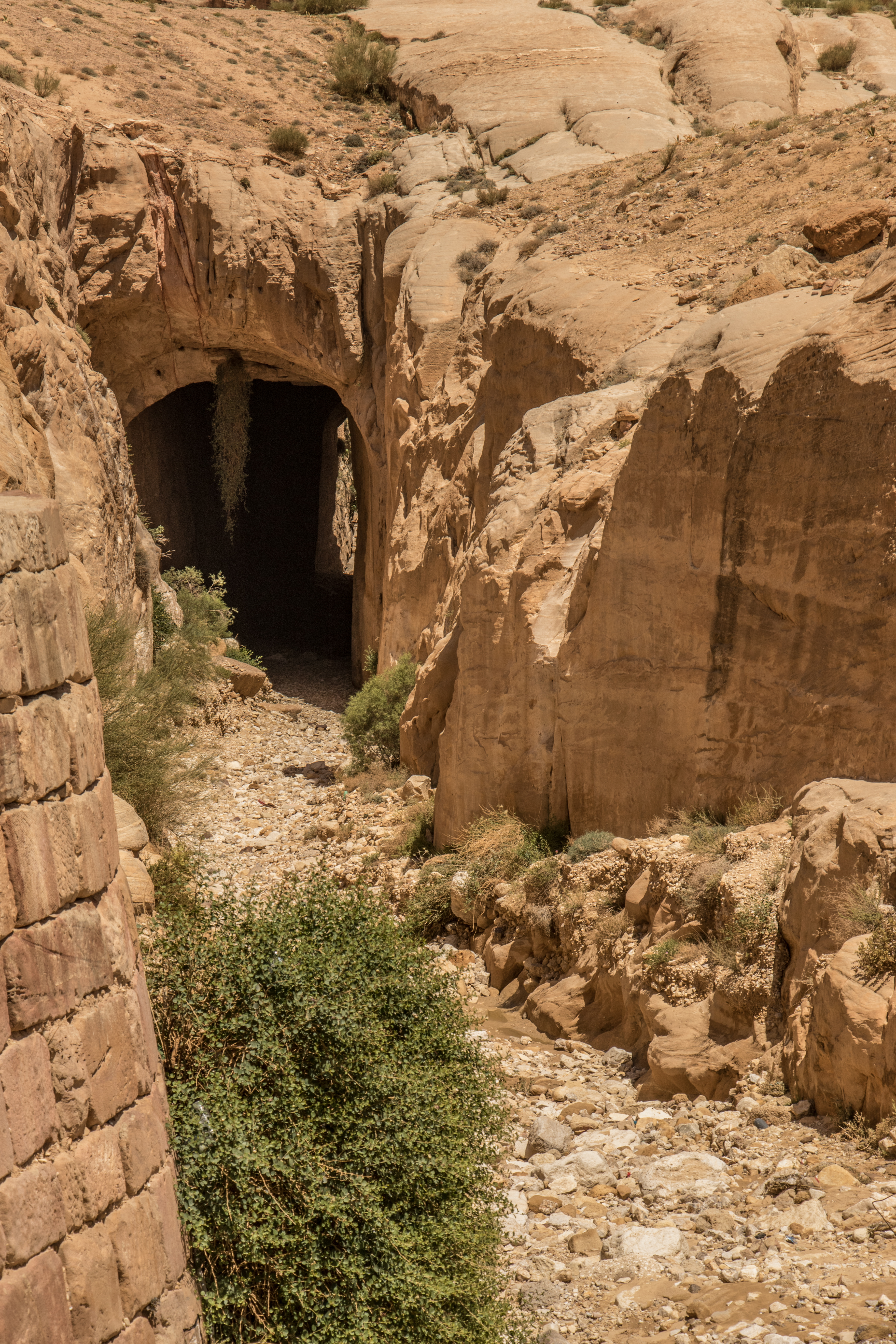
The dam redirected the flood waters into a tunnel, then into other storage.
Then into The Siq – the path from the ancient entrance through the gorge. 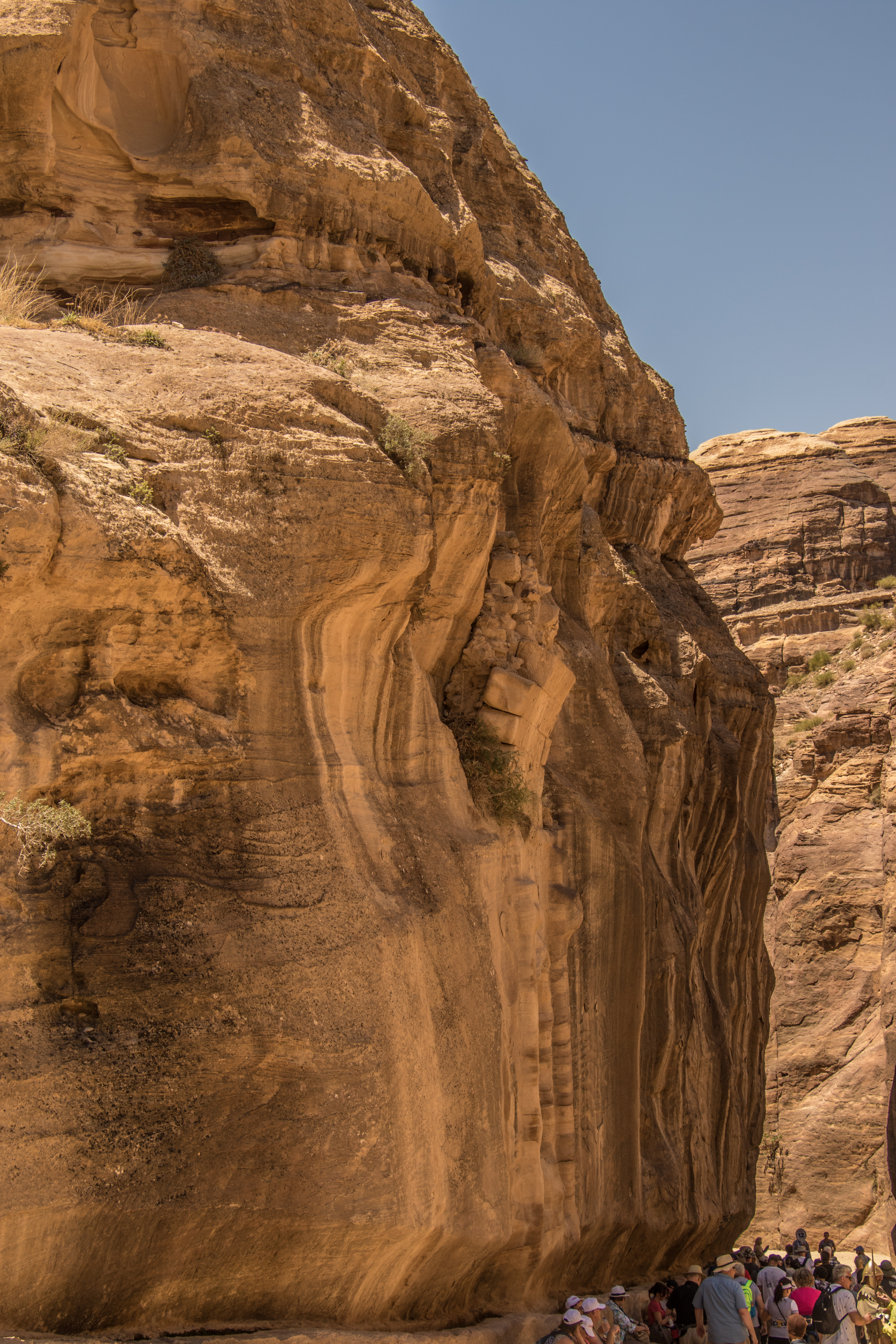
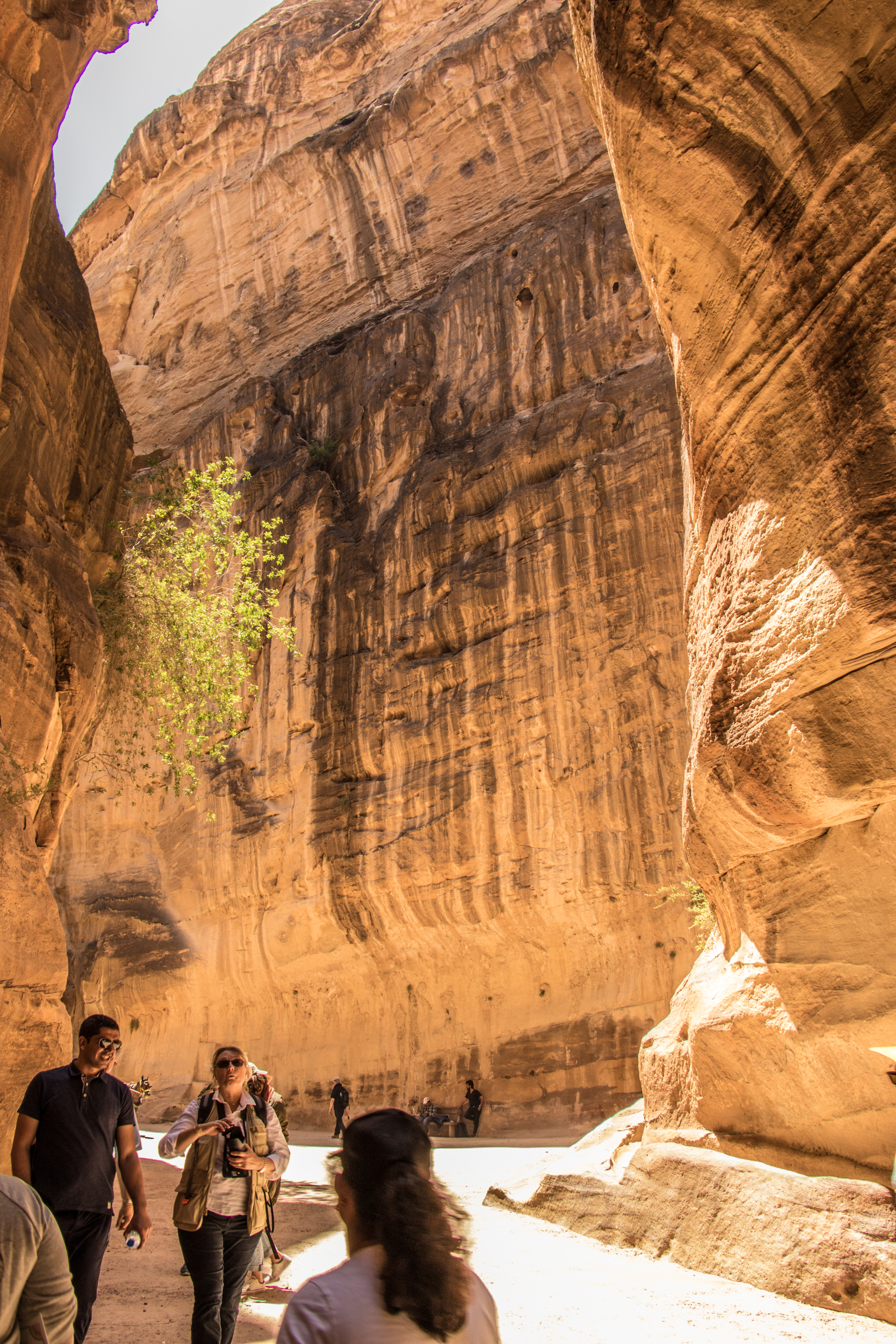
Another 1200m walk – of the most mind blowing kind. I knew Petra was going to be amazing BUT the Siq was something else.
Mostly a narrow gorge caused by erosion and around 80m high. The Nabataeans did some chiselling to open it but it is mostly natural.
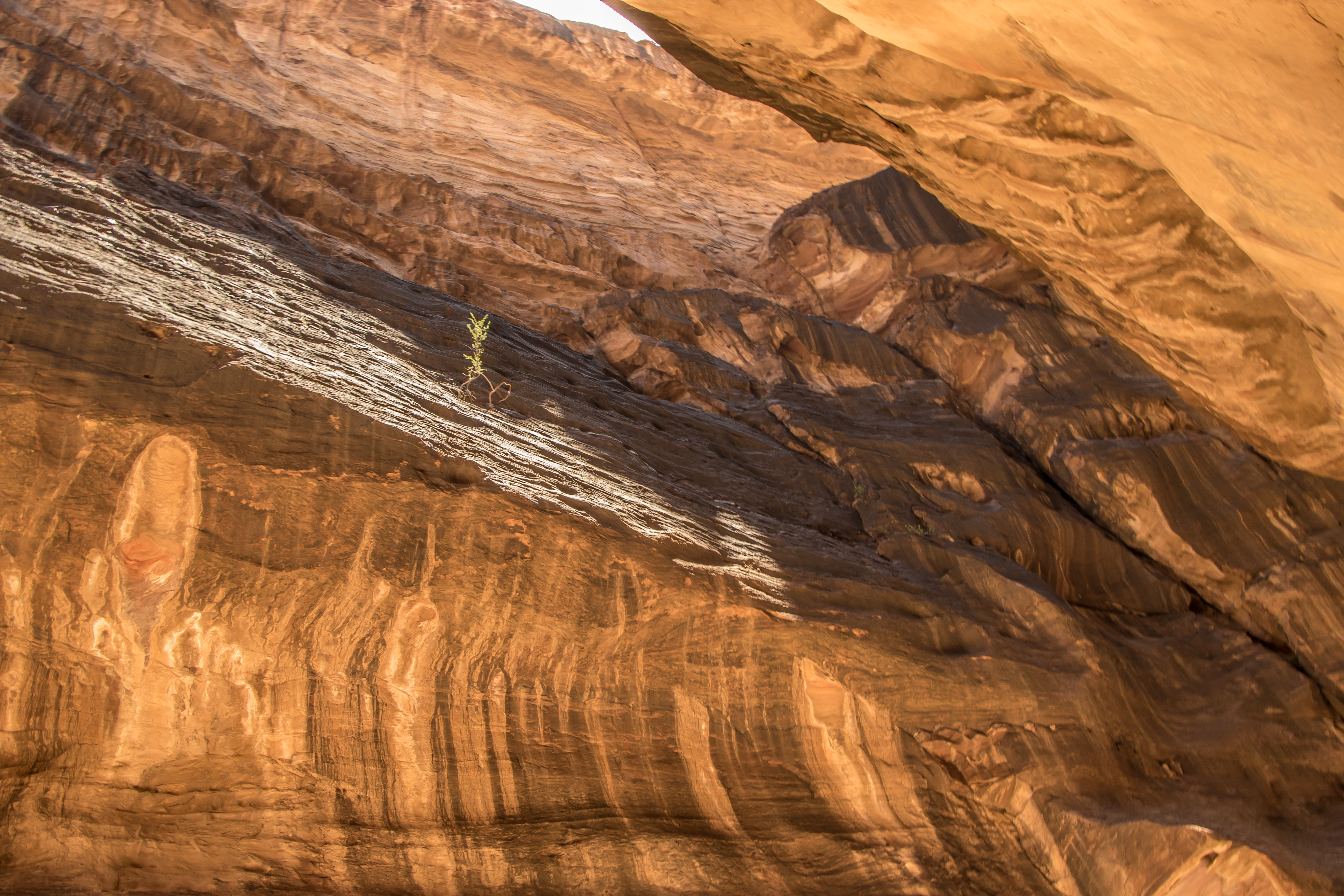
All the way down was a water channel, like a spoon drain, and evidence of pottery pipes. The Sig is/was paved with stone slabs.
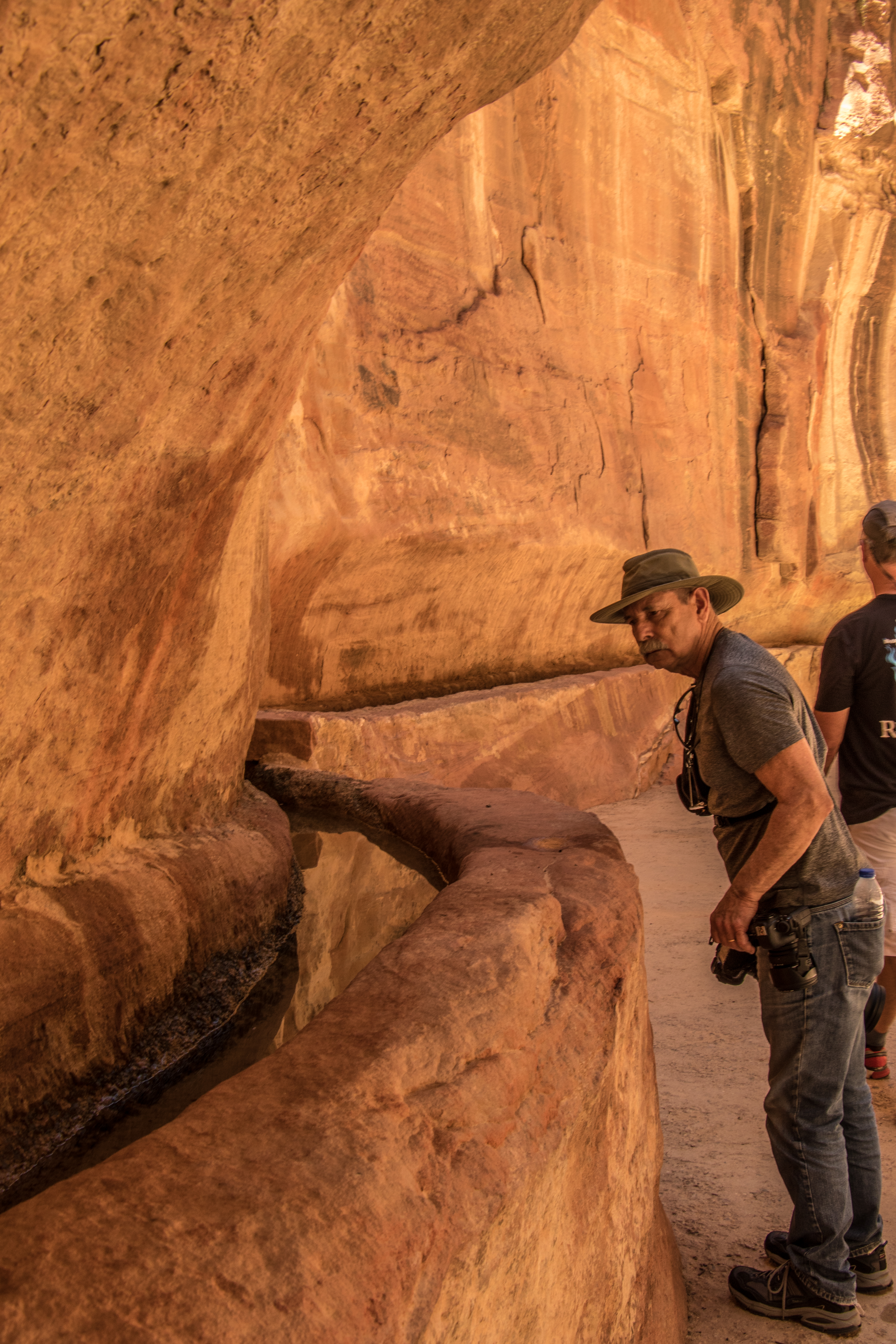
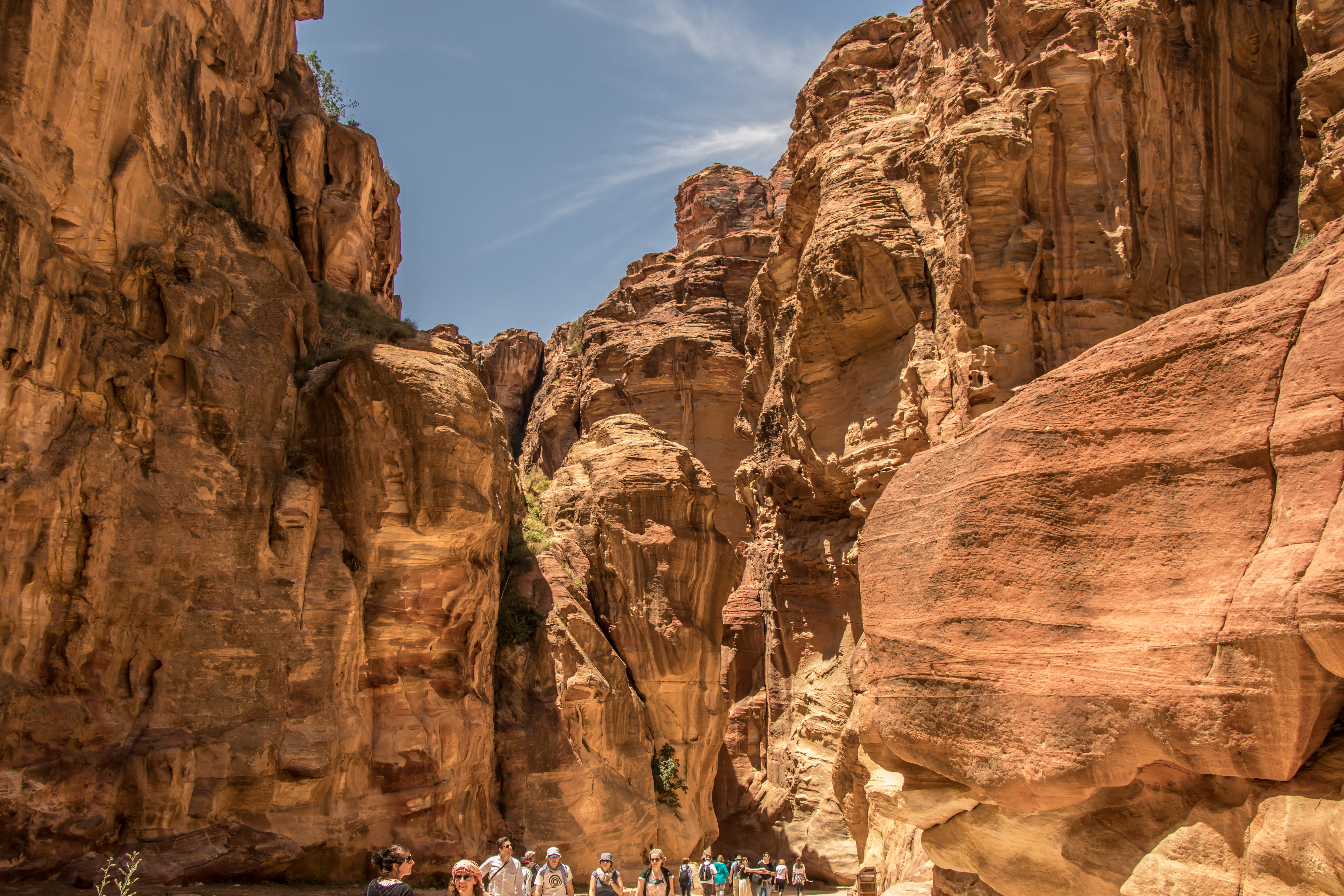
The rocks looked like poured toffee. The colours and patterns were amazing.
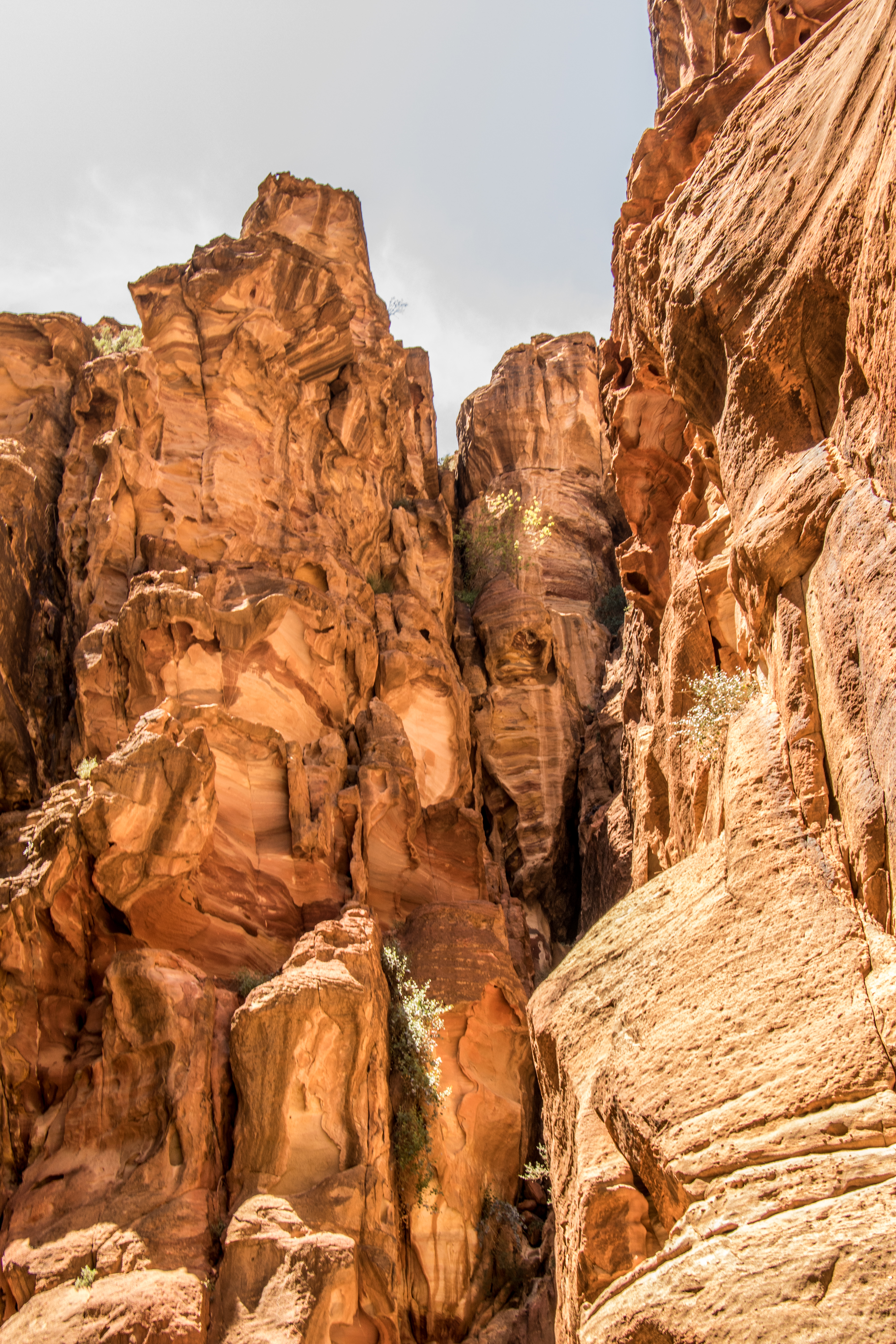

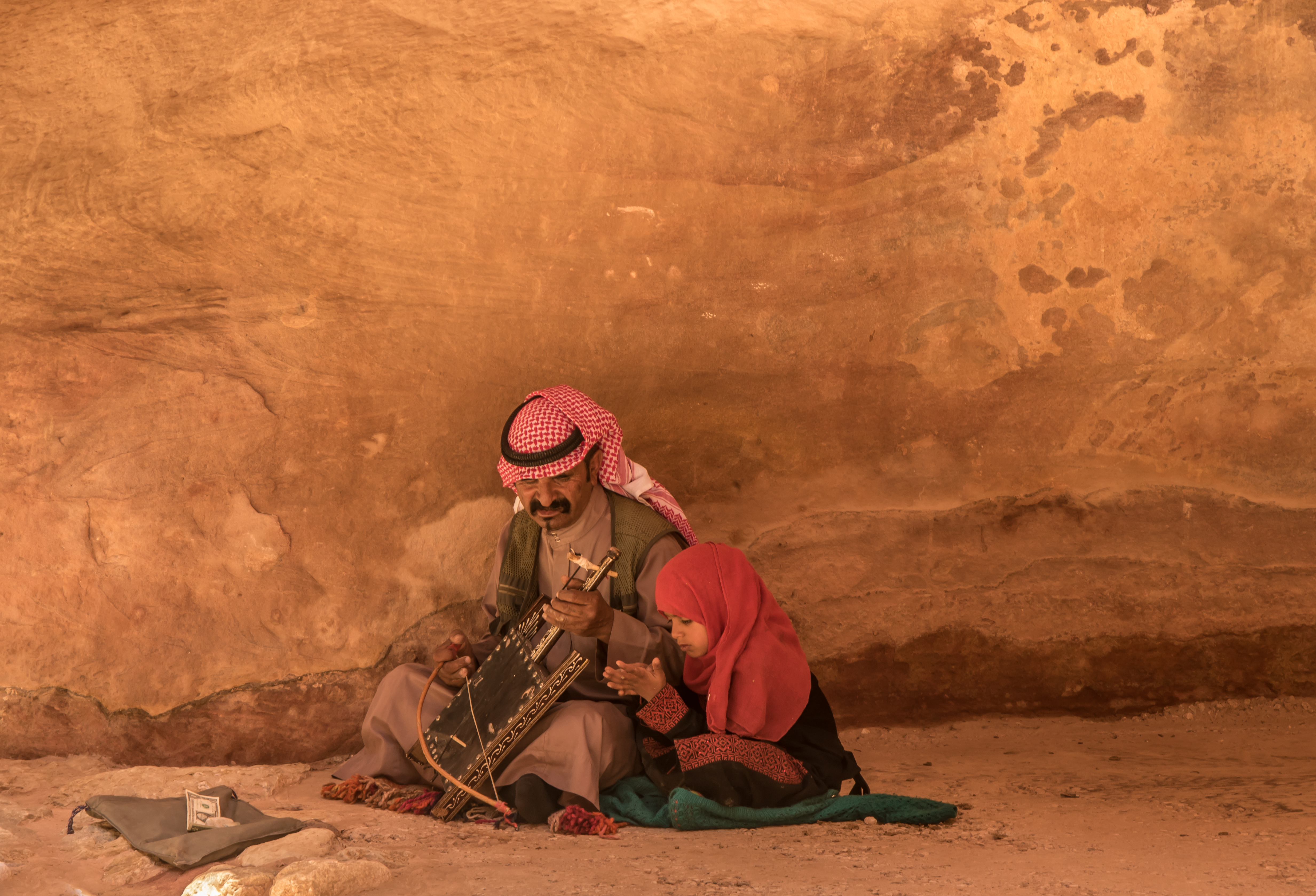
This was THE MOST STUNNING walkway ever. Took a long time as it was so amazing. The horse rides stop at the main entrance but the carriages go down this part. In many parts the Sig is only three meters wide, so thousands of tourists, and horse carts – often cantering – makes for an interesting walk. They yell at people to get out of the way. Saw one of our cruise friends get knock to the side. And as for the Argie Bargie when two meet in a narrow point!
I did not care what Petra was like. This canyon was perfect.
You walk to the bottom and come to the split in the Siq – and there it is – directly in front. The Treasury! or Al Khazna. The most famous part of Petra.

40 meters high and intricately decorated with Corinthian capitals, friezes, figures and more. It’s topped with a funerary urn, which according to local legend conceals a pharaoh’s treasure. It was actually just decoration. The Treasury consists of two floors with a width of 25.30 meters and a height of 39.1 meters.

They are not sure what it was built for: some archaeologists believed it to be a temple, while others thought it was a place to store documents. They have found a graveyard beneath the Treasury.
(Our walk down to the treasury took well over an hour as our guide stopped us many times to talk.)
It was fantastic. Really beautiful. To one side of the Treasury is a solid wall, the end of the canyon. The rest opens up into a huge long space that goes for who knows how long. We only had three hours down there which went in a flash. Need to come back!
I didn’t climb the 850 rough cut steps to see the Monastery. Thought the way down would be a bit problematic!
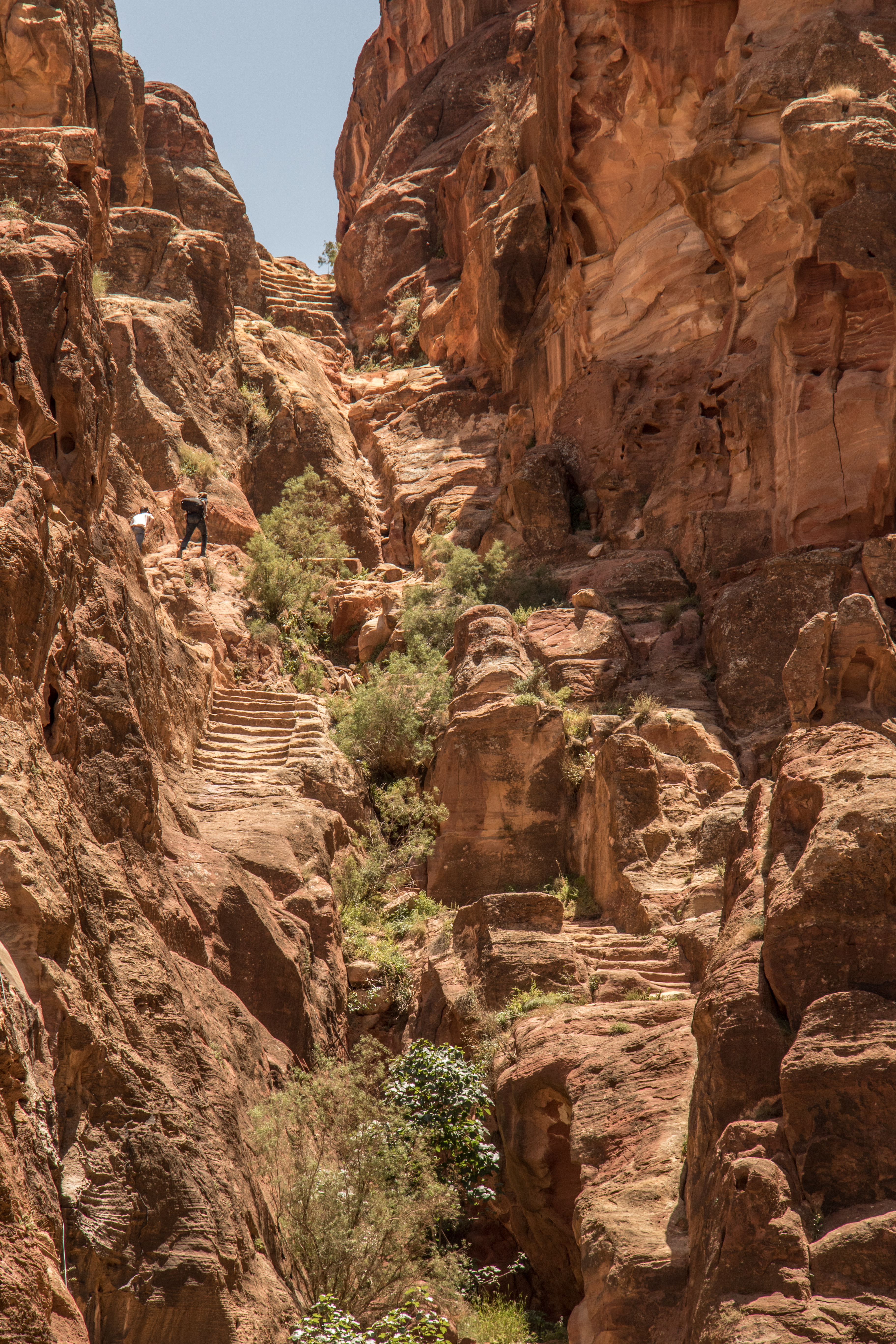
But did go down to the next area. It is all pretty amazing. You really could come here for a few days.
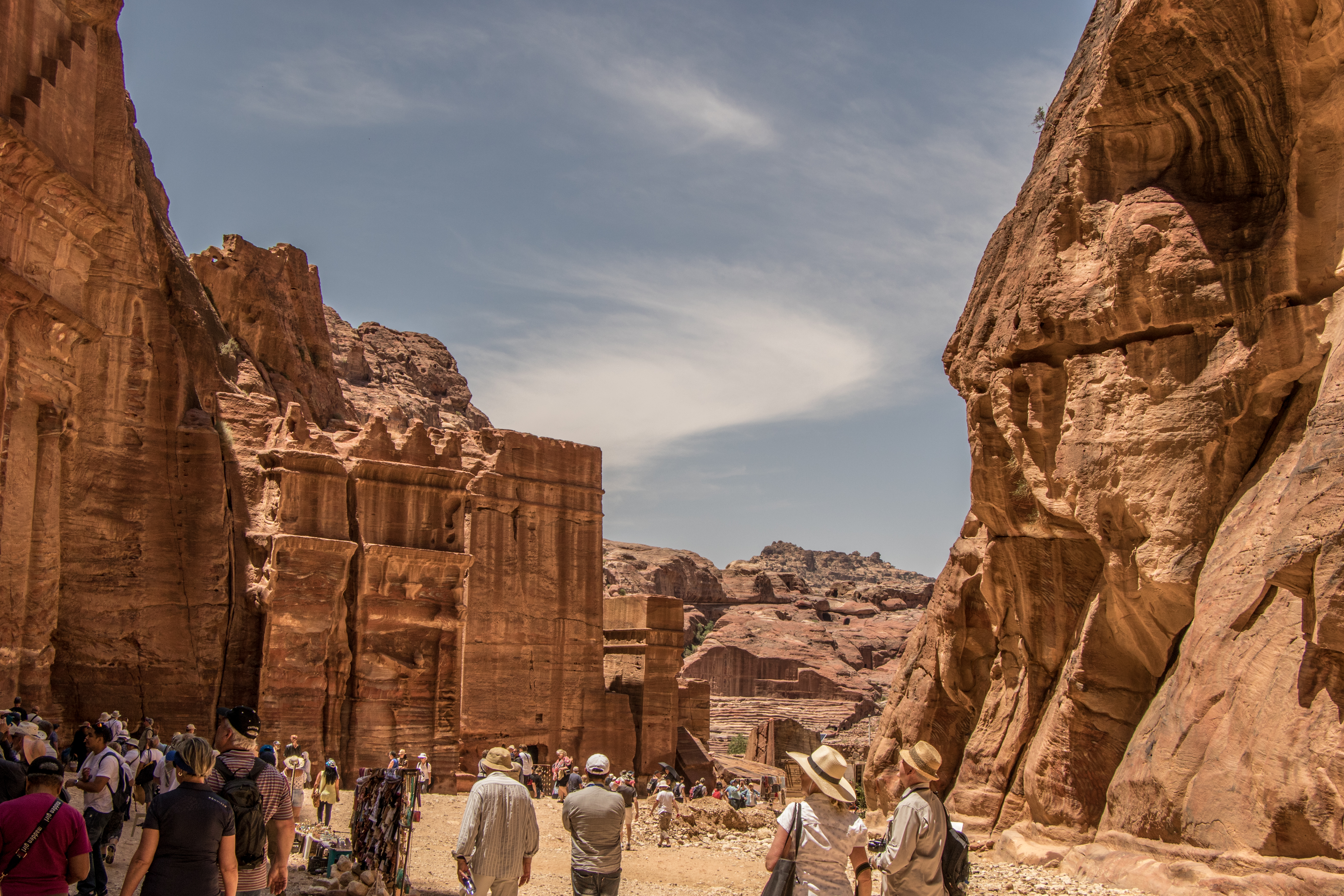
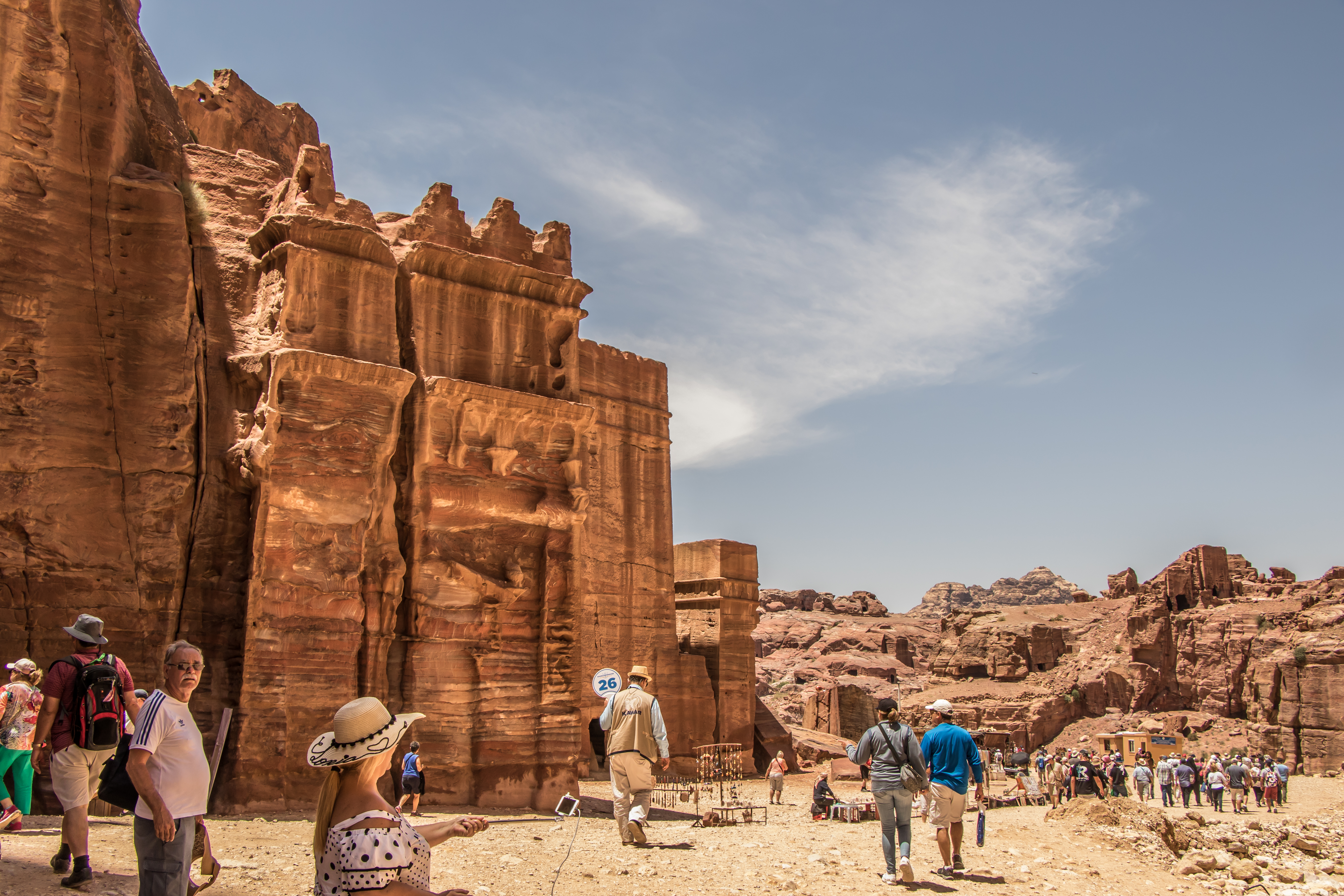
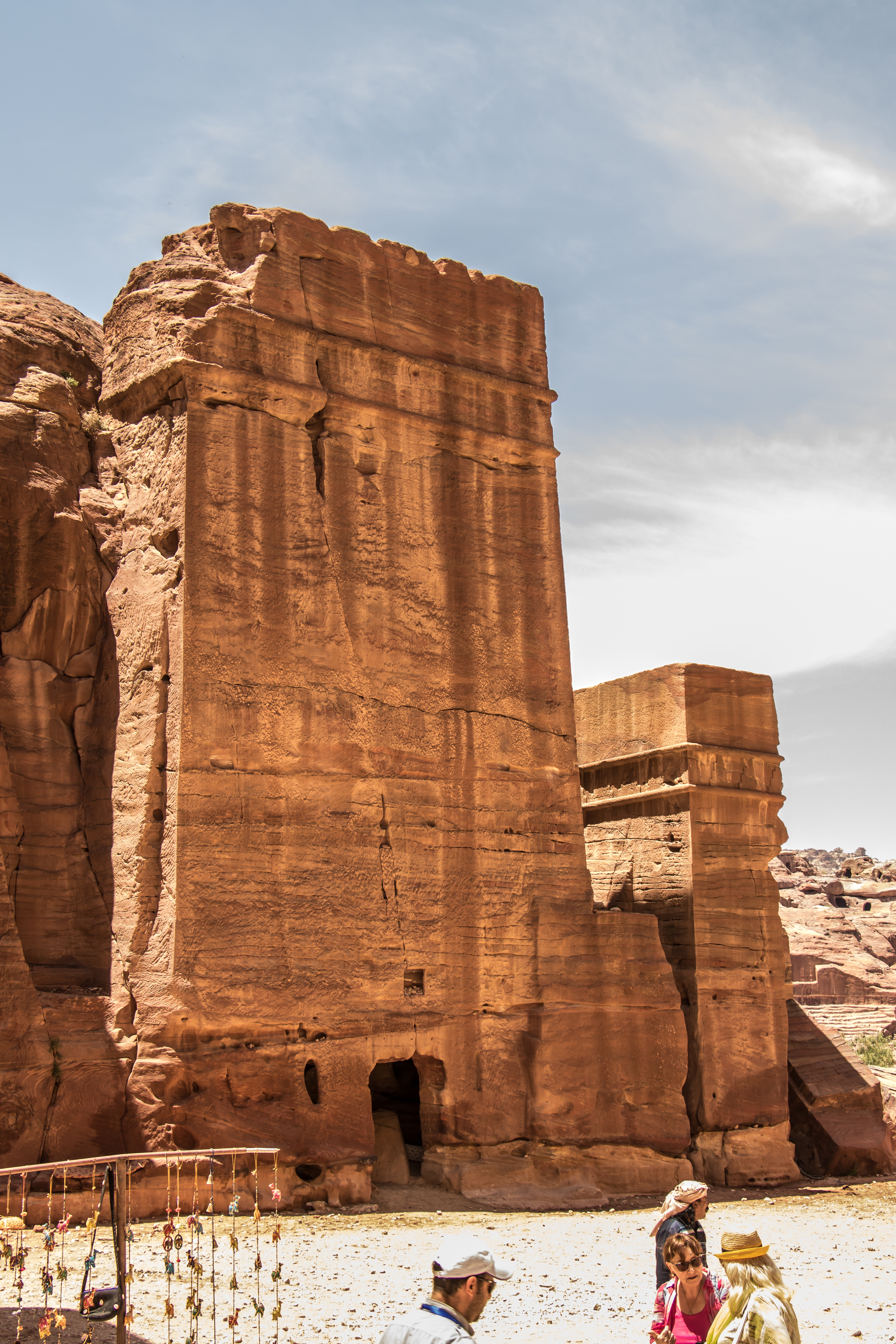
The walk back up the Siq was just as exciting. The rocks are gob smacking! Then onto a ‘horse’ for the walk up! Much better.
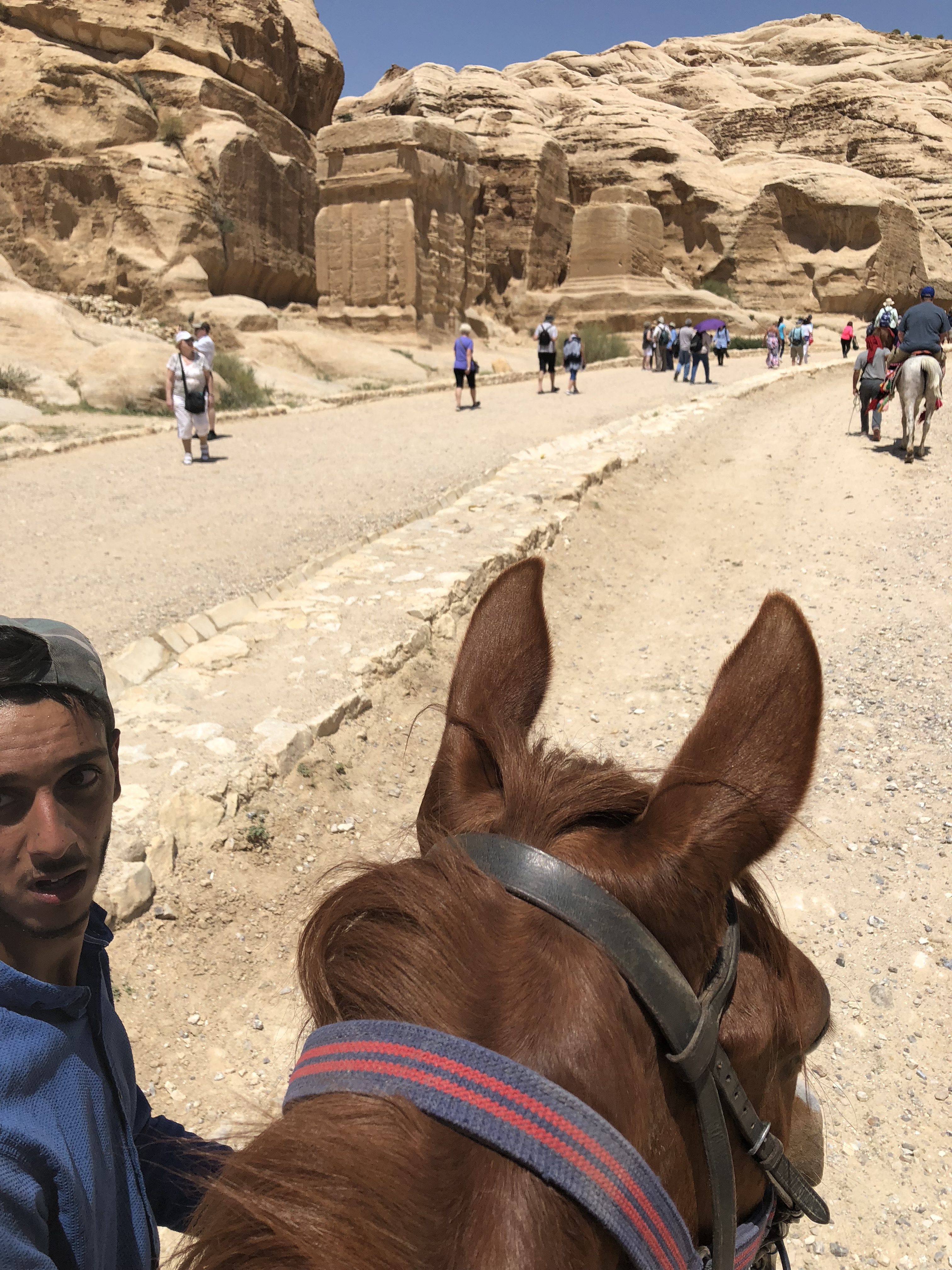
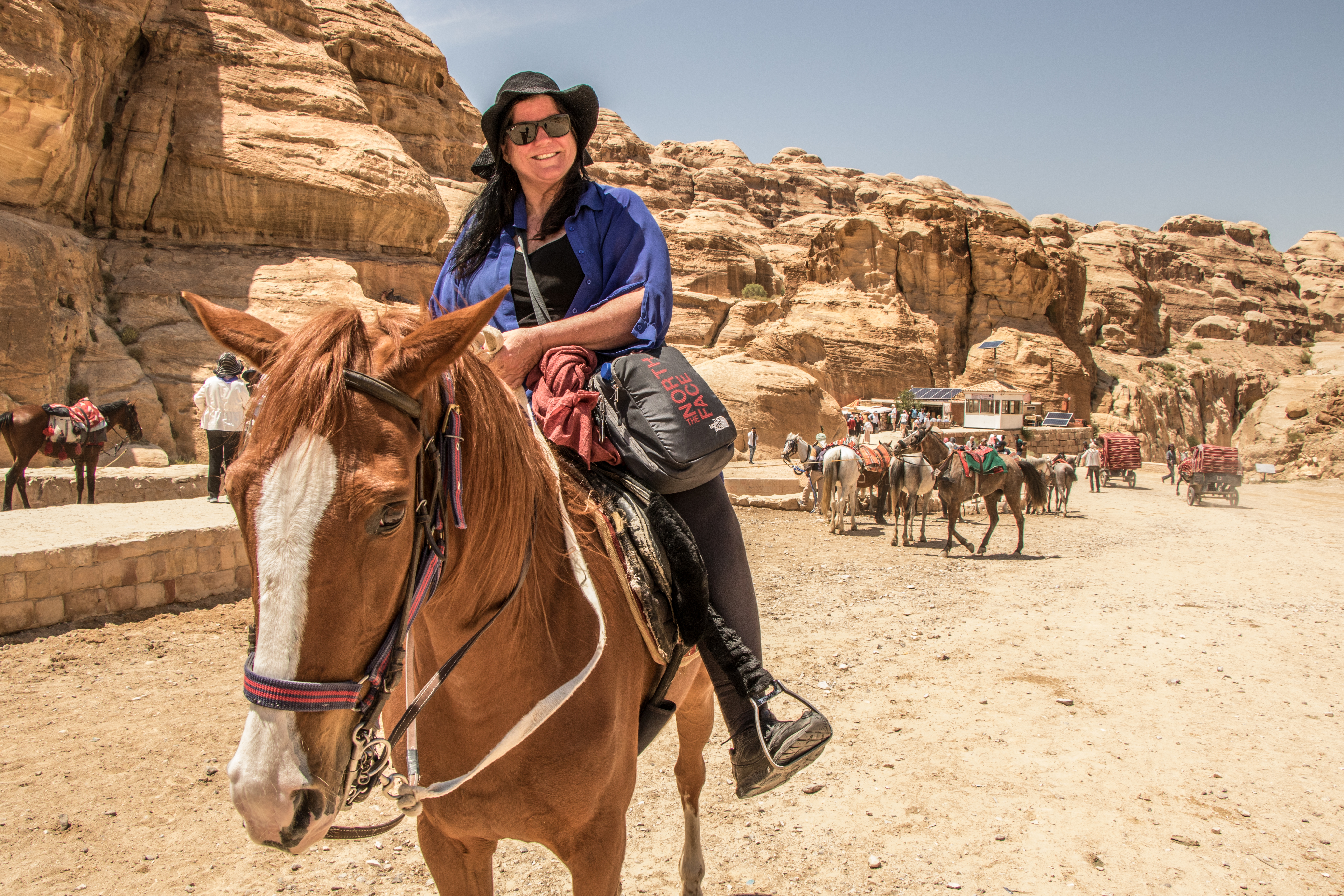
Petra is pretty special.
(NOTE – Next time I go – as there will be a next time…I would do it differently. The things you learn! I would arrive and get a cart all the way down to the Treasury; 15 min and $20.
Then a camel or a donkey from the treasury – all the way to the bottom of Petra! Takes about 2 hours return and about $30. You sit and stare and take photos and enjoy!
Then walk back up the Sig and a horse to the top – about 10 dollars and 20-30 minutes.
You could see a huge amount in three hours this way.)
Into the bus and off we went. Back on the edge of Wadi Musa, is the old traditional area of the guides tribe. They moved in the 60’s. The place was run down and has now been done up as a resort. Beautiful with the most amazing views. The lunch was excellent – lucky as I am always whining about how bad, how unauthentic and how touristy the lunches are on tours. But this was great.
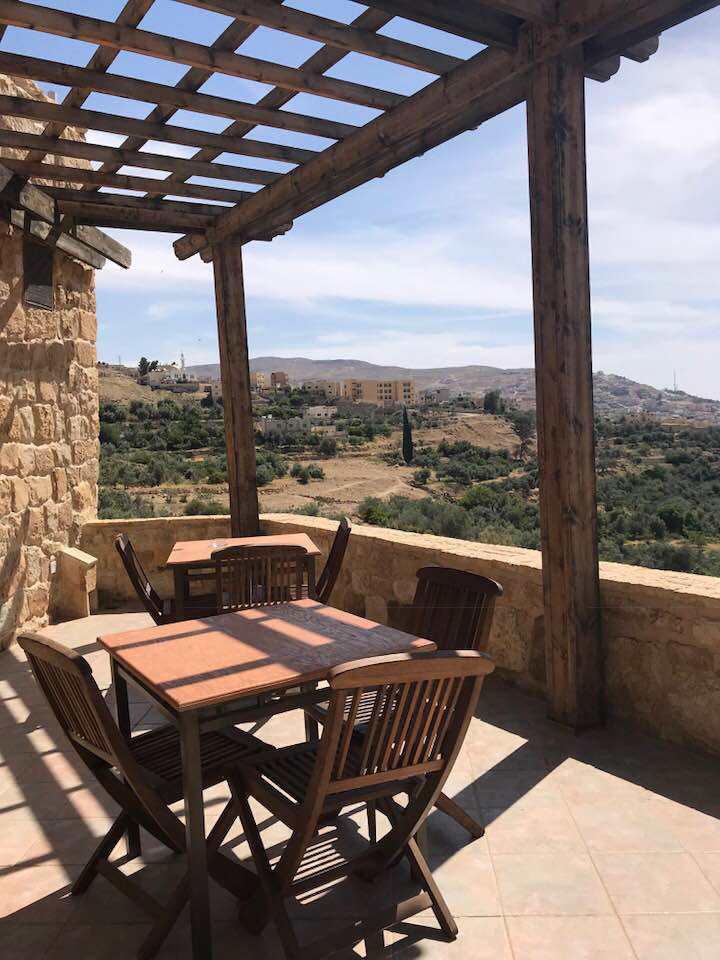
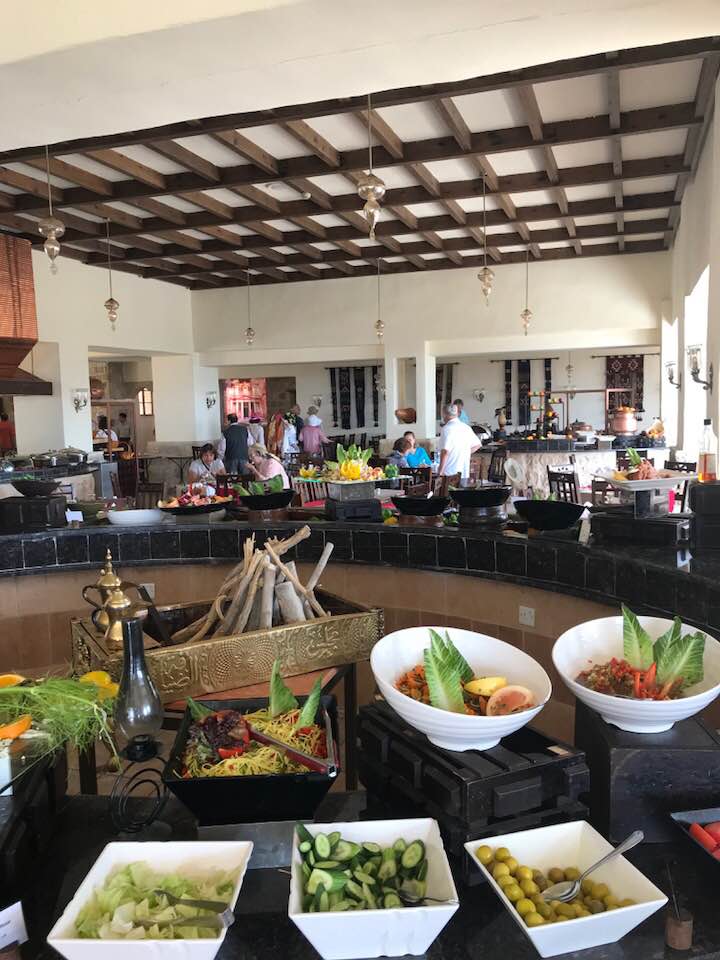

The drive to Wadi Rum was great. More animals, through small towns with all the sites, lots of Bedouin camps.
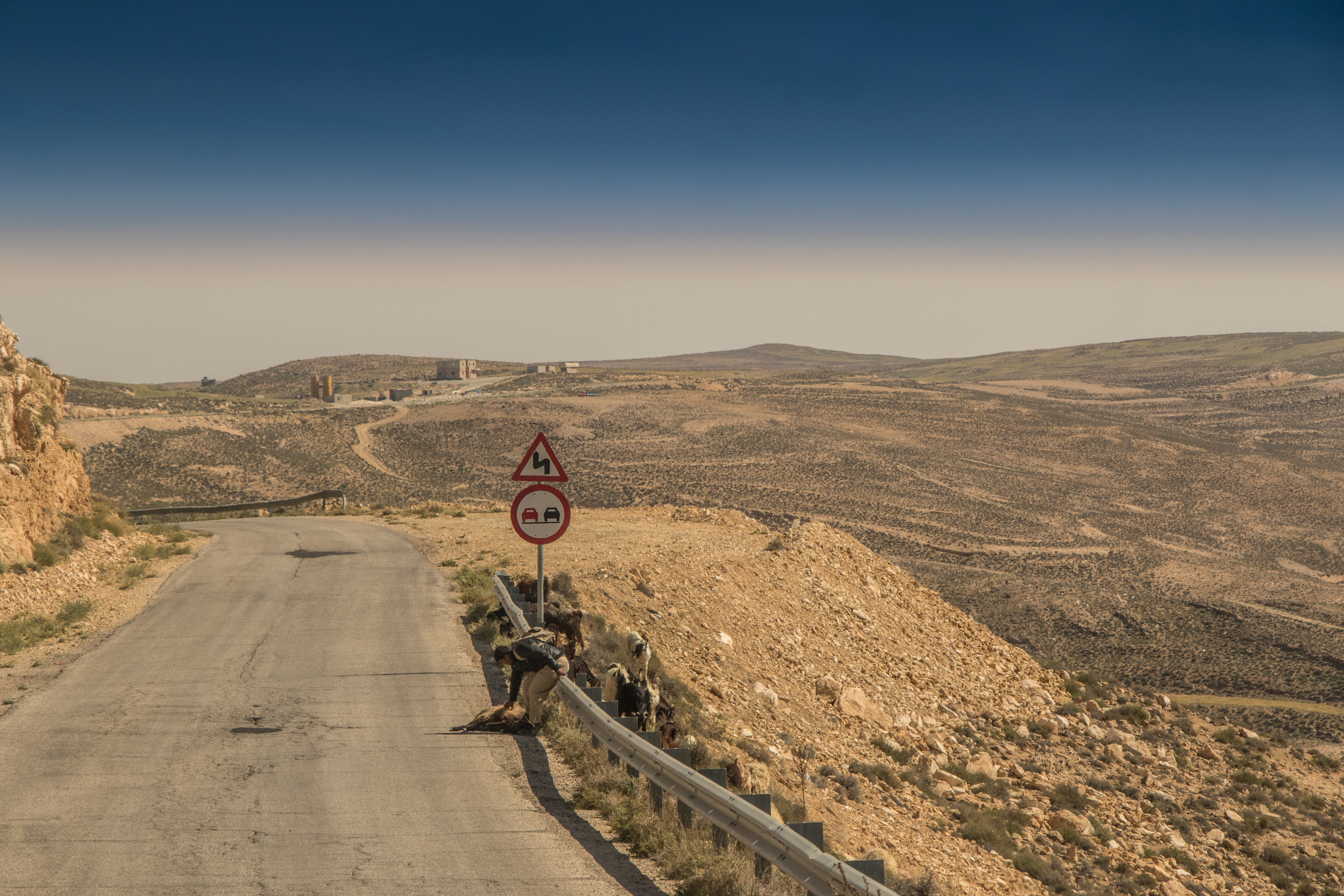
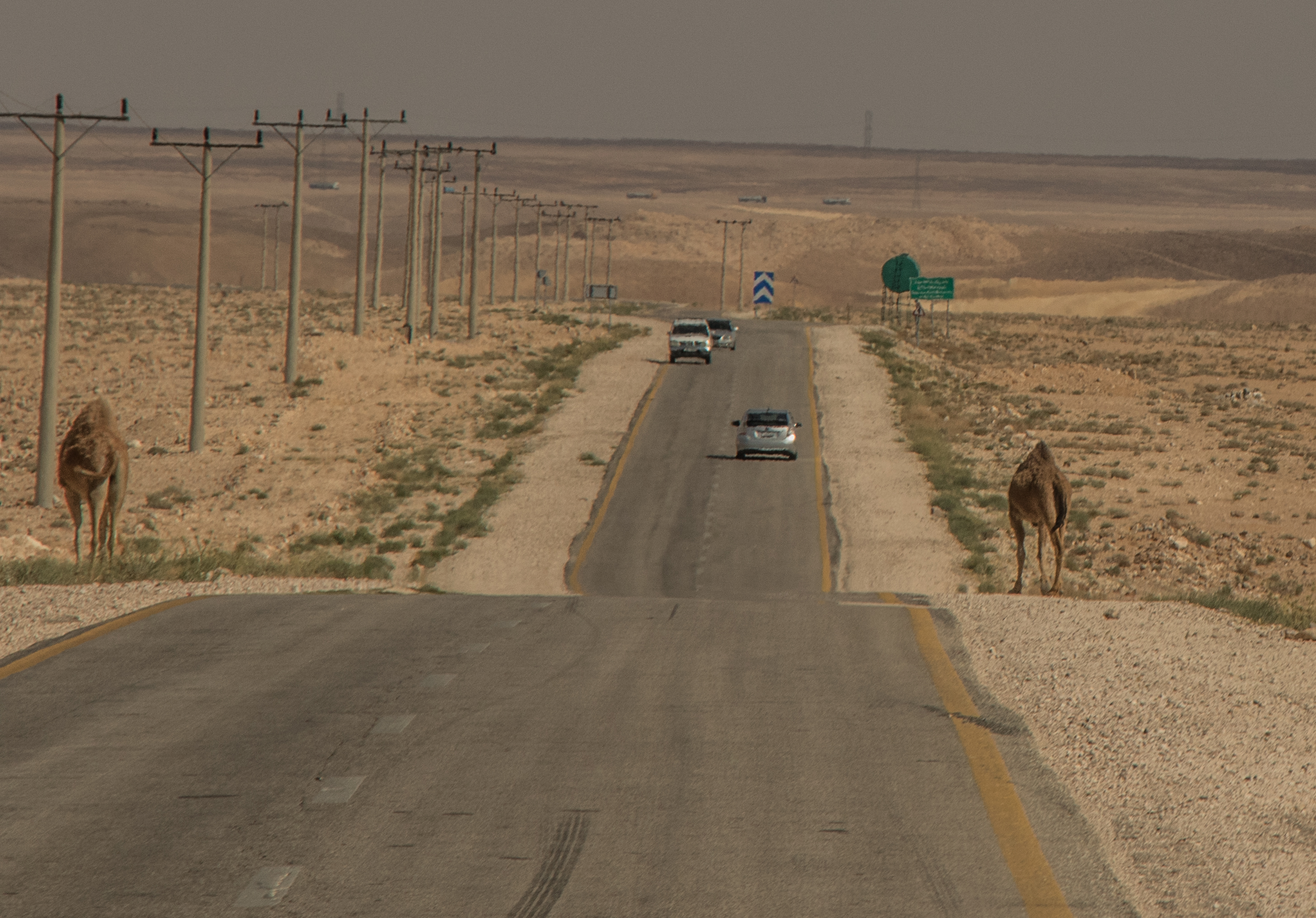

Wadi Rum. A valley cut into sandstone and granite mountains. A Wadi is a valley. Wadi Rum in Arabic means ‘Sand Valley’ – especially light sand that can blow in the wind.

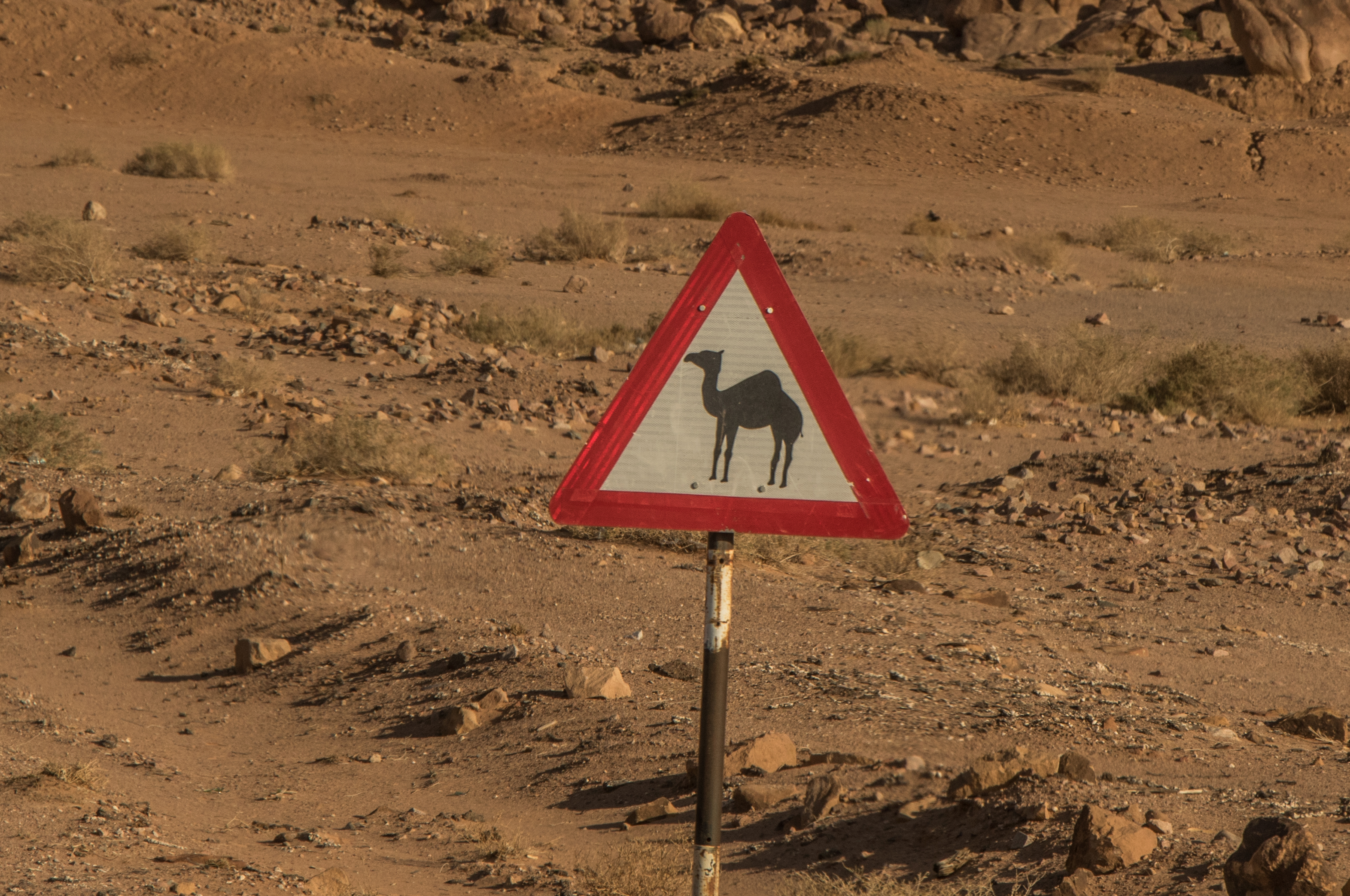

It is probably best known for the T E Lawrence story. AKA Lawrence of Arabia – a British agent posted there in 1917-18 during the Arab Revolt. A rock formation is named the “Seven Pillars of Wisdom” after a book he wrote.
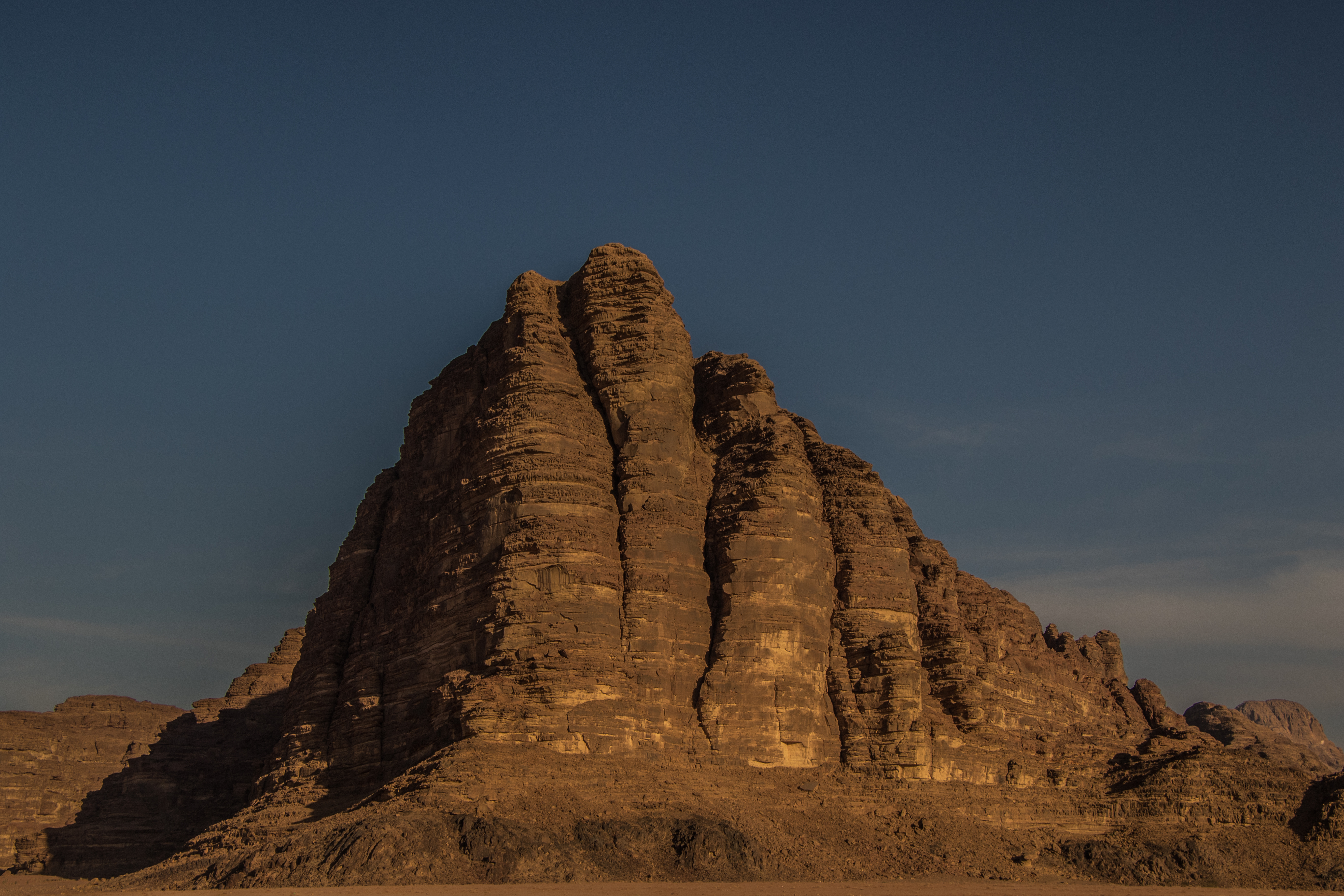
After arriving we all climbed into jeeps. Bench seats in the back with big cushions and headed off. It was a lovely sedate drive – lucky as the cars were from the 50’s – and many of the drivers were from the 2010’s – apart from the 75yo. One car had an engine light on, petrol gauge on empty and a spare fan belt on the front seat (so I was told).
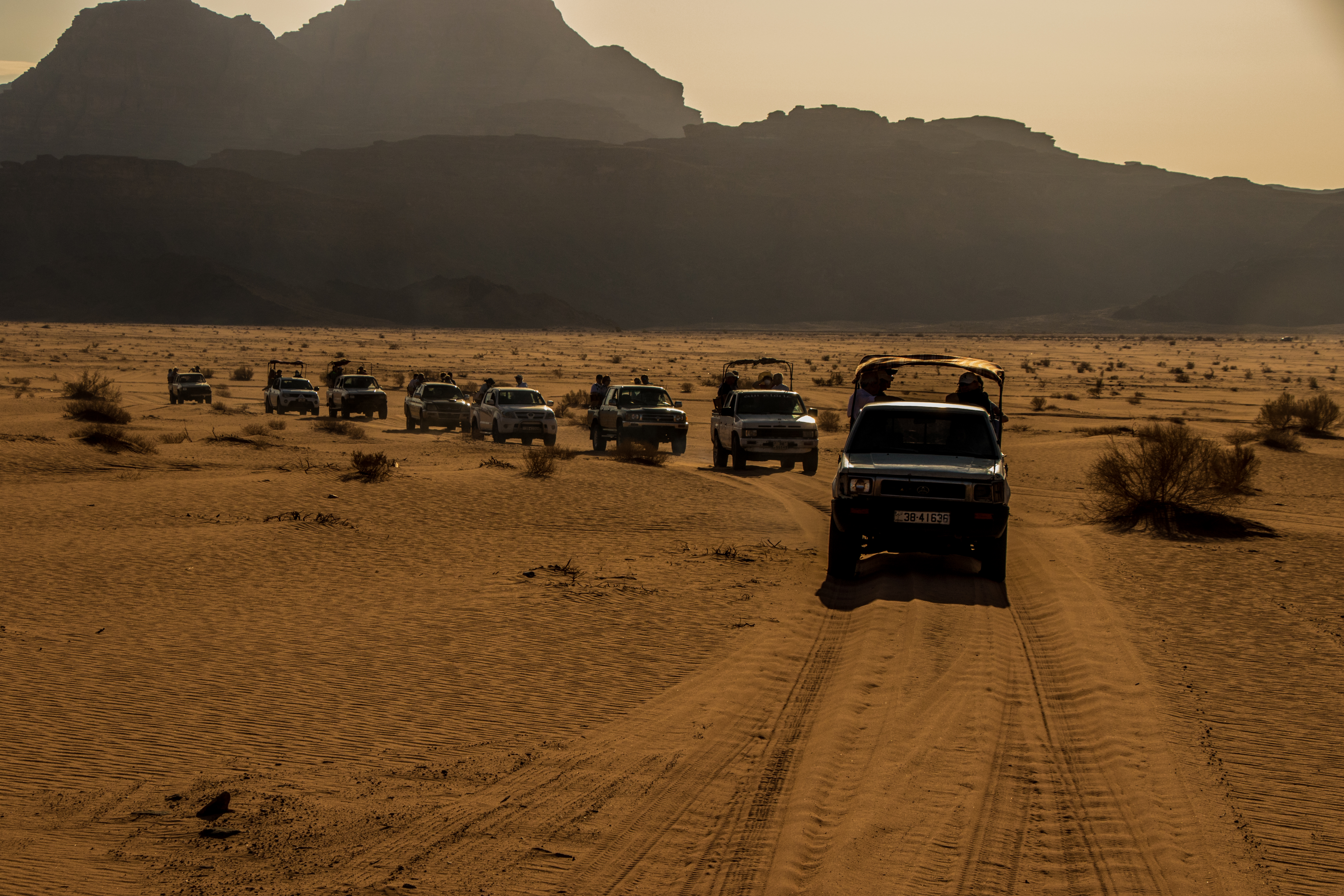
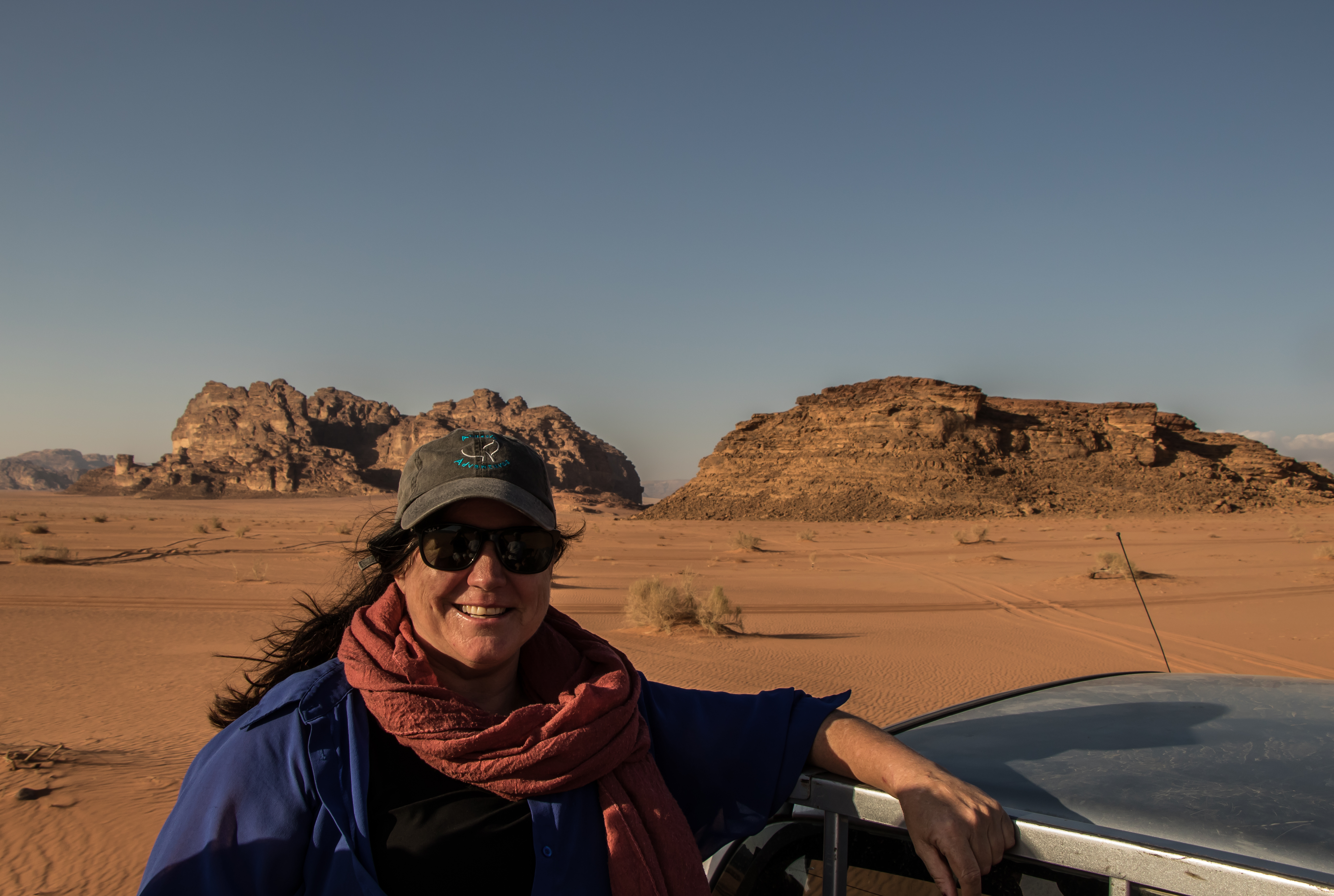
The rocks were beautiful. These were not poured toffee. They were cakes decorated by a kid, where the icing kept running off the edges.
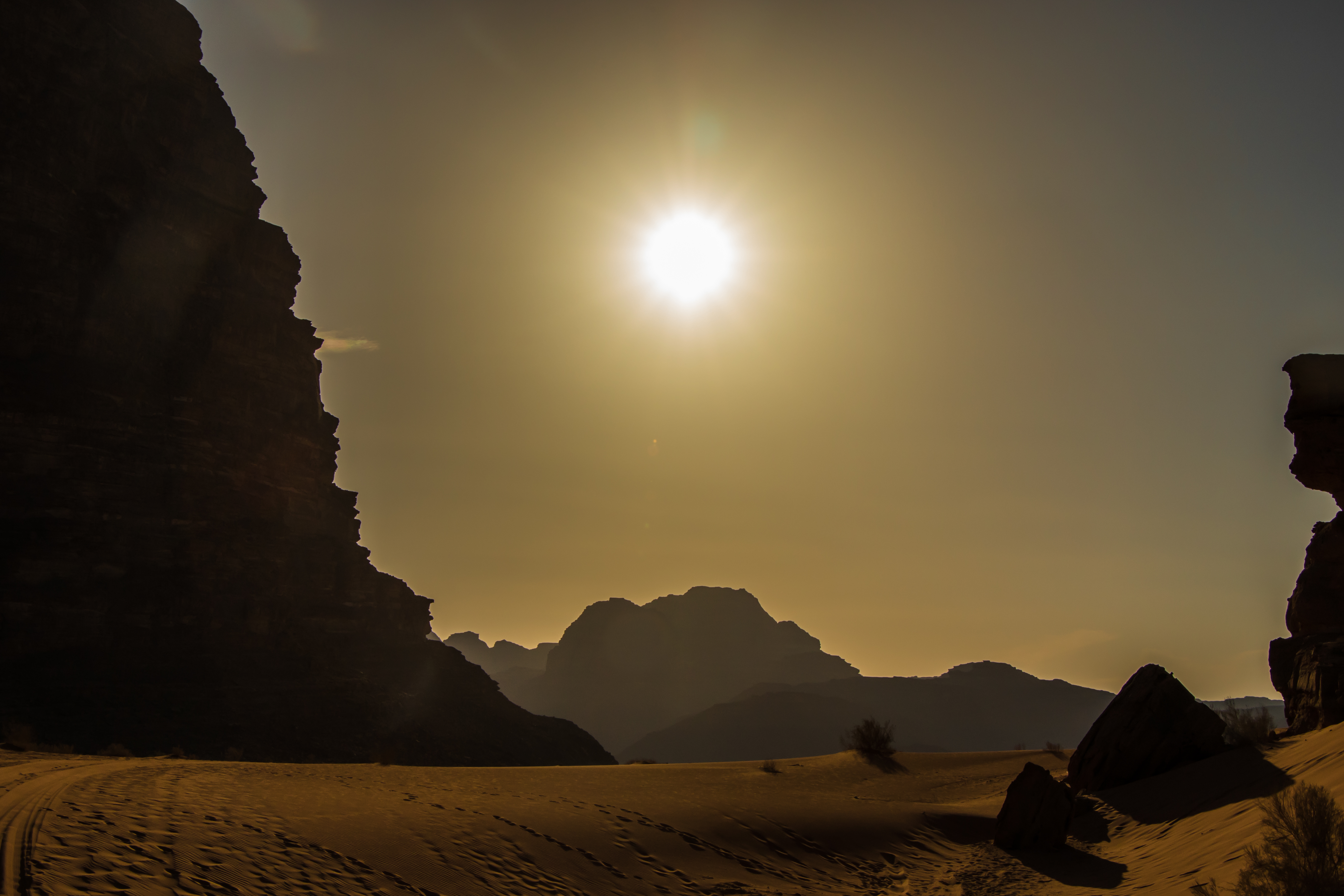
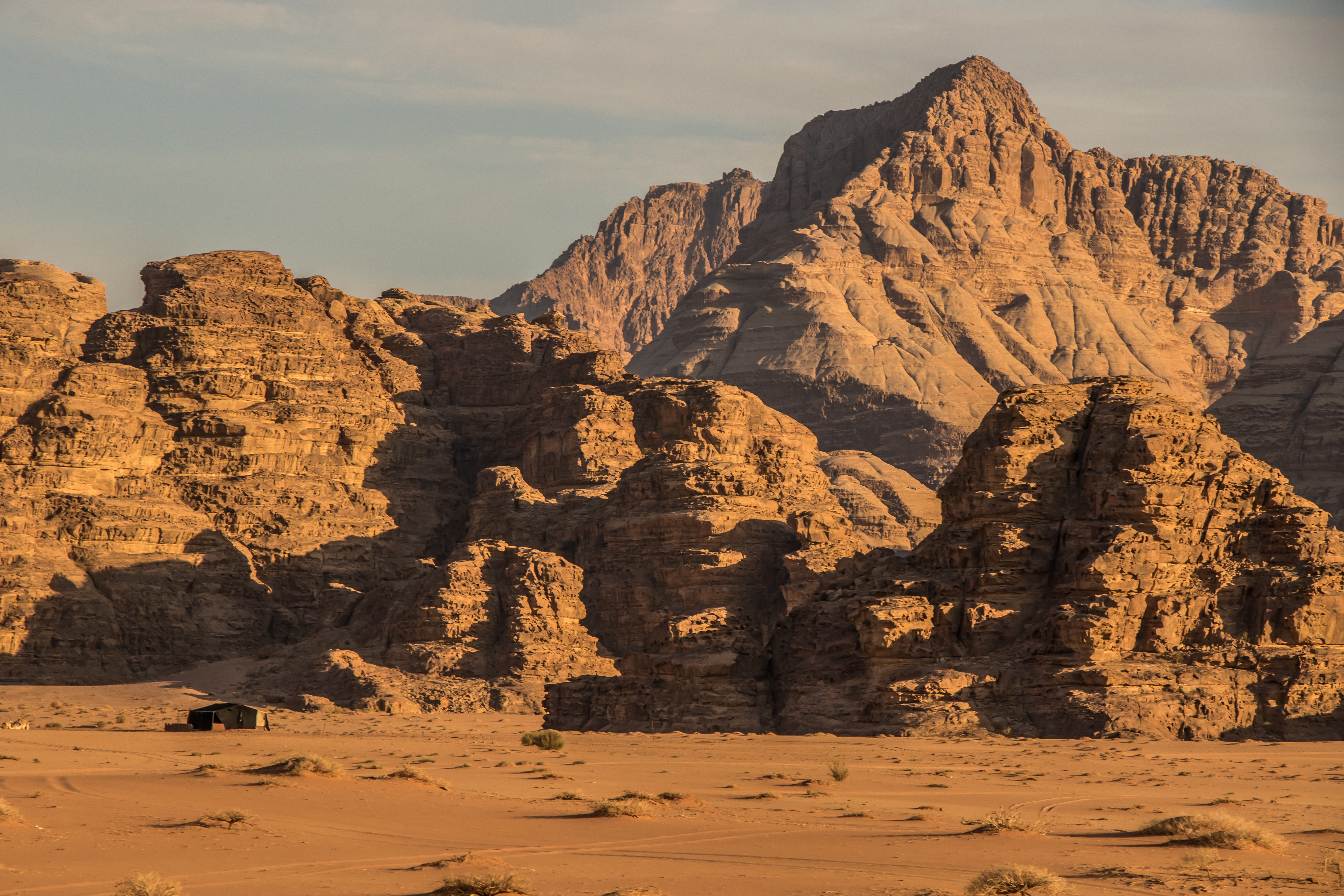
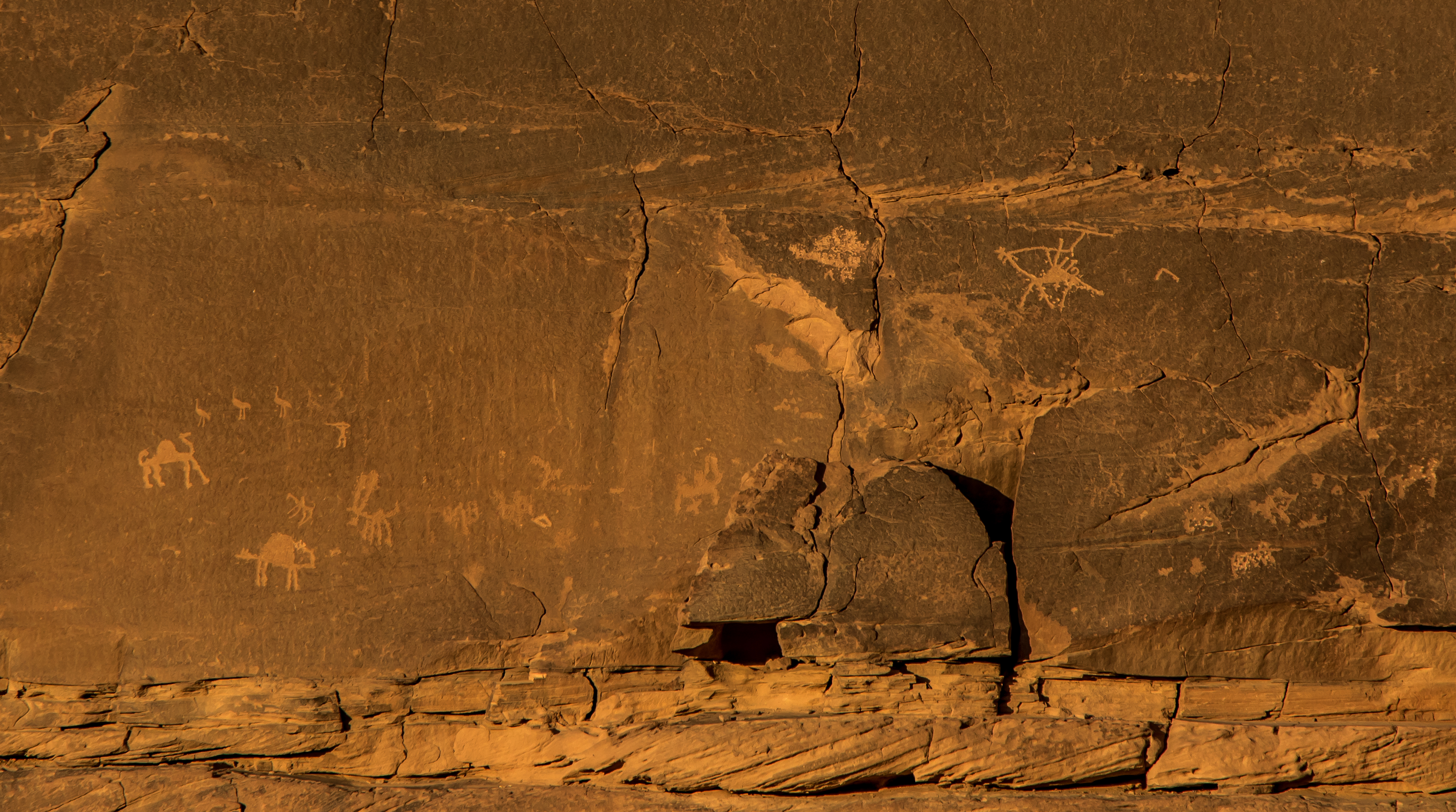
I looked everywhere for Matt Damon. They filmed The Martian here, and I thought/was hoping he may have stayed around. Rogue One was also filmed here.
Petroglyphs (etchings), from around 800BC.
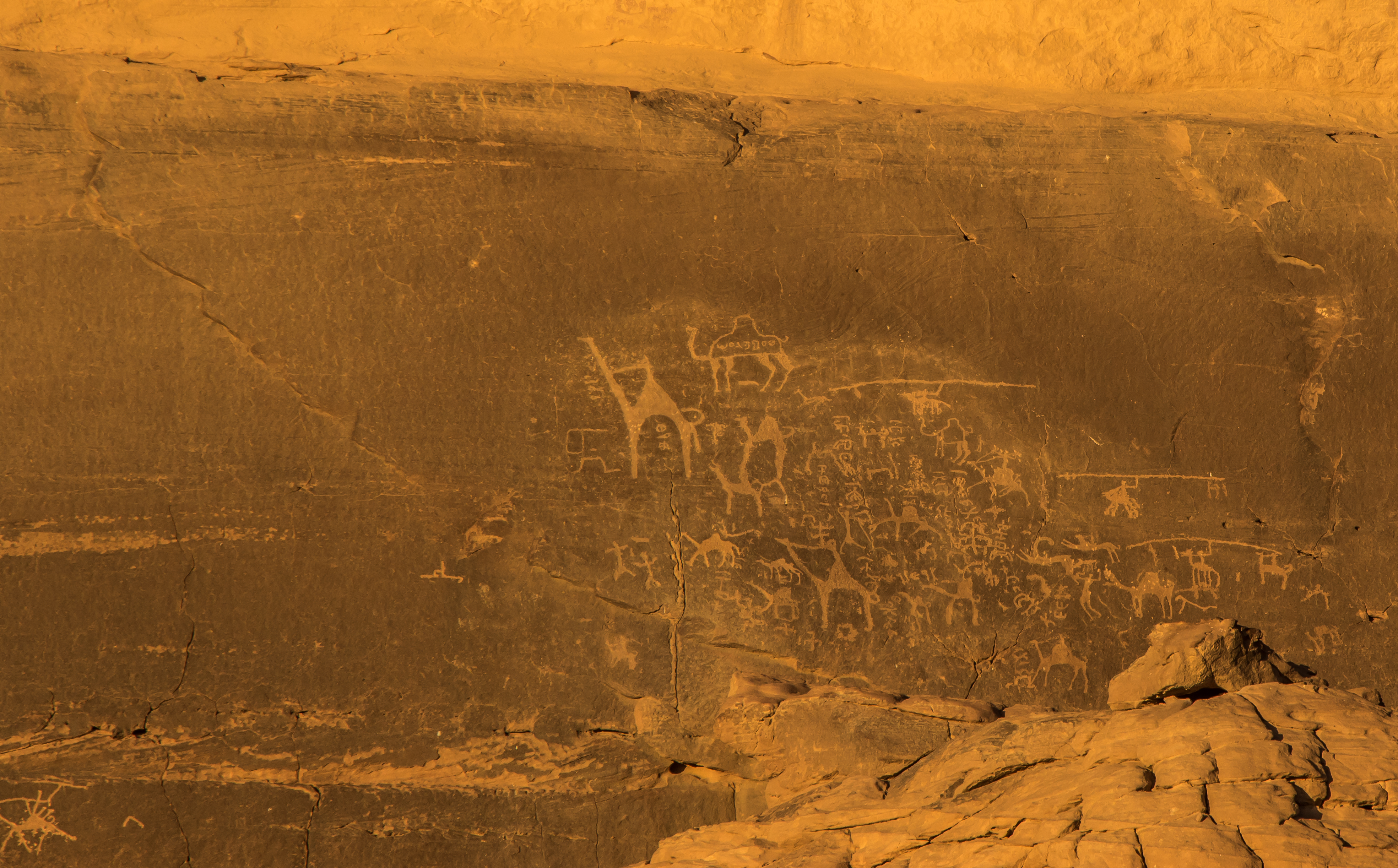
We walked up a sand hill, and I was so angry to see a stack of cigarette butts up there. The sand was so red.

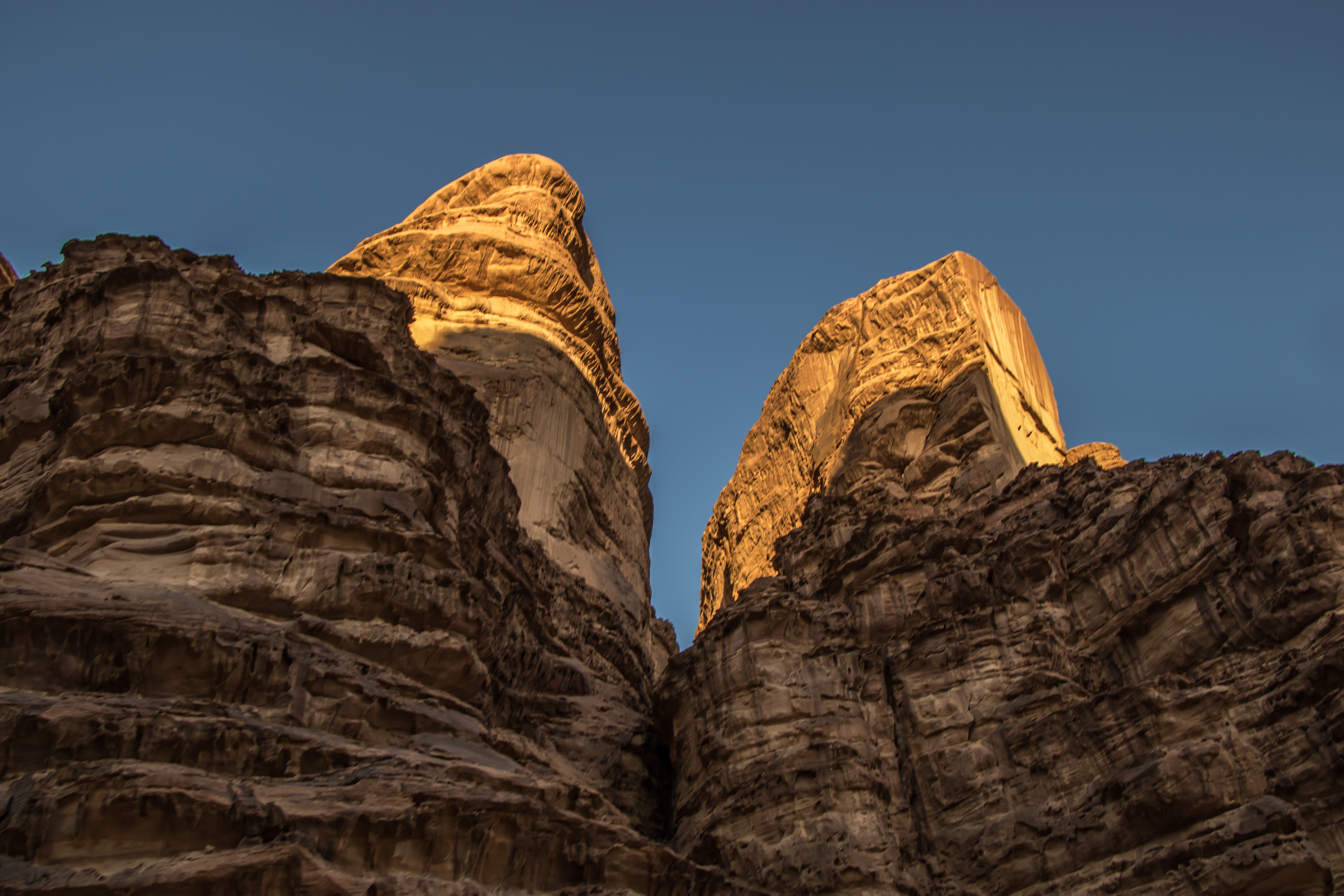
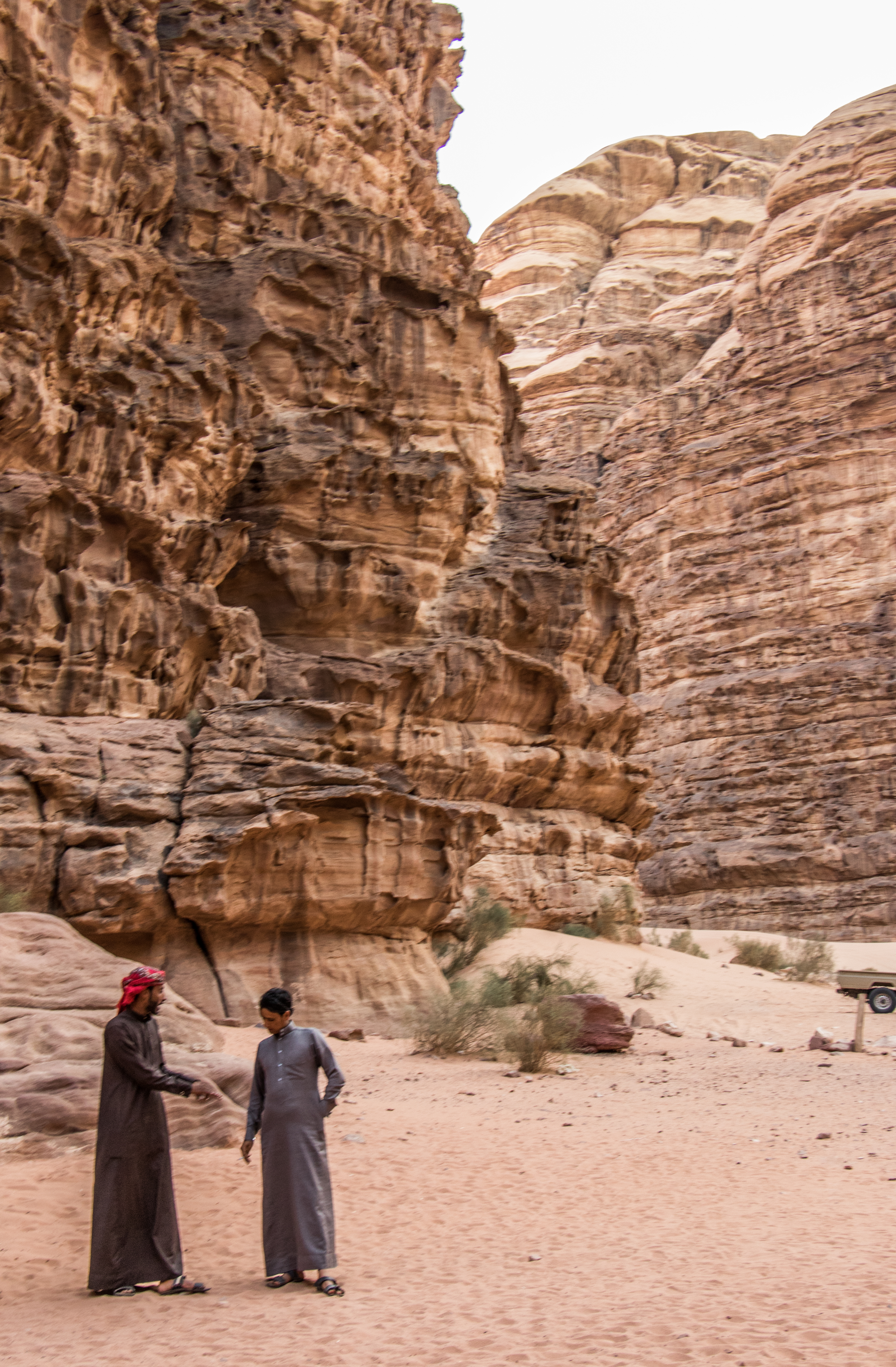
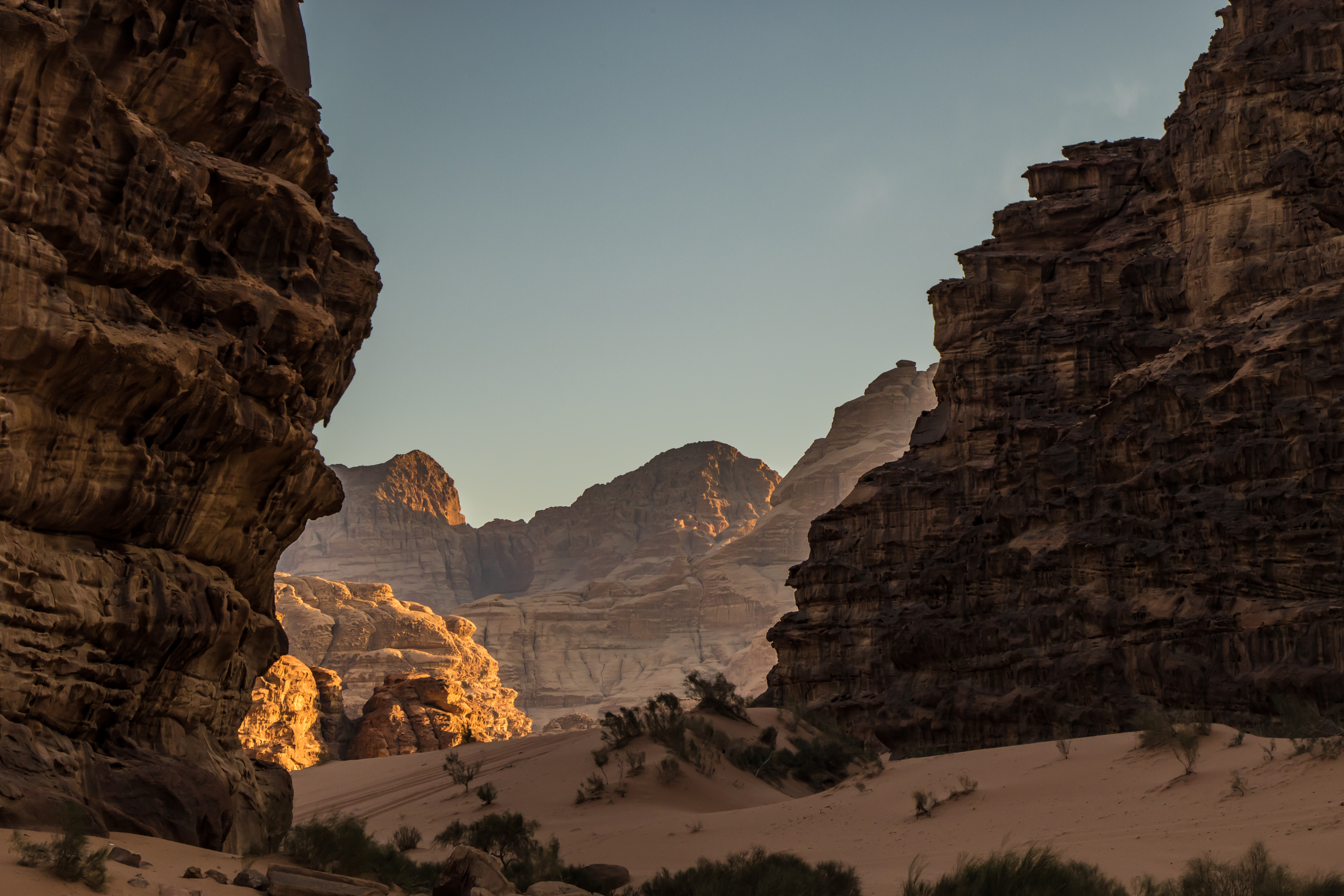
We drove around for two hours then stopped and waited for the sunset. It was lovely.
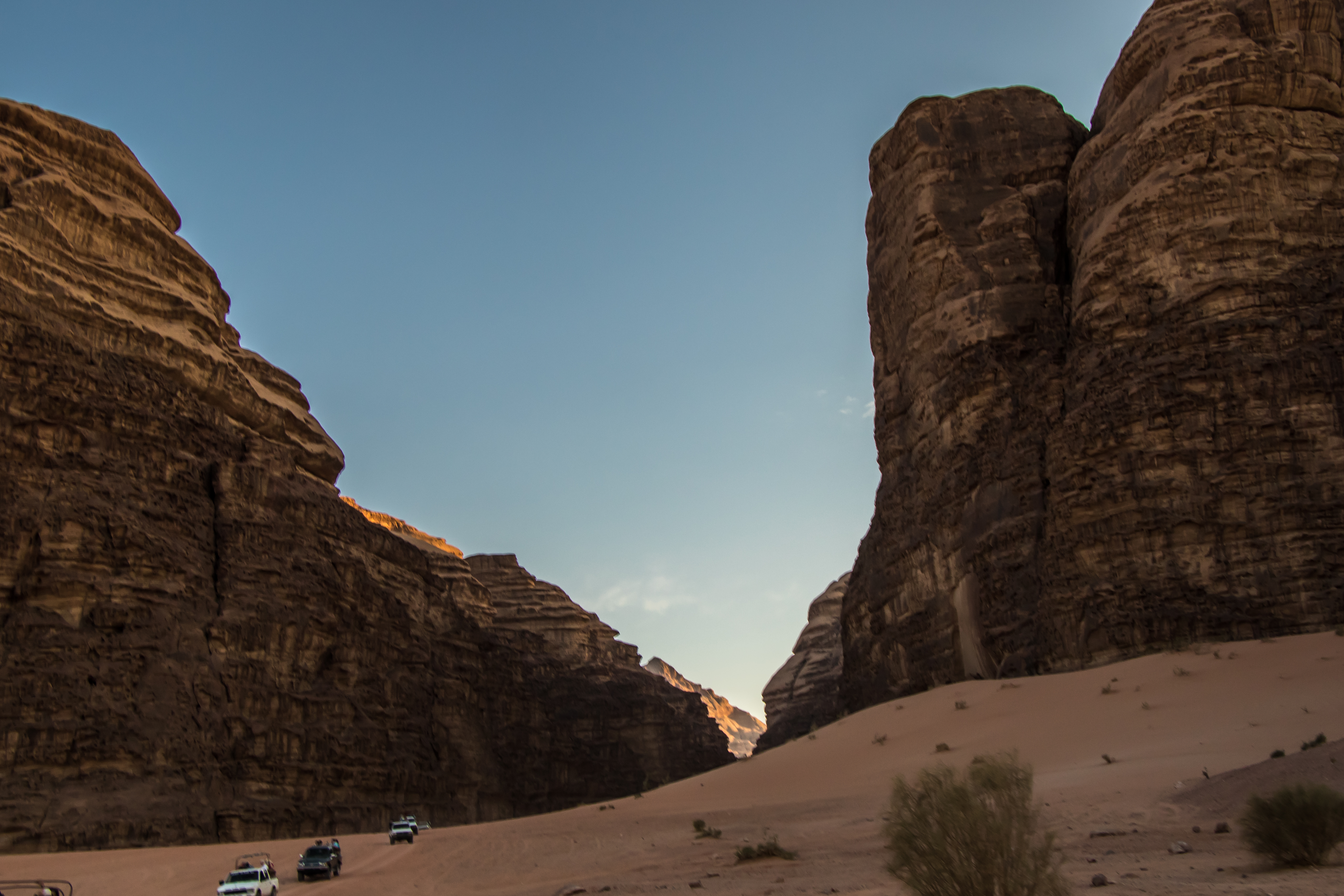
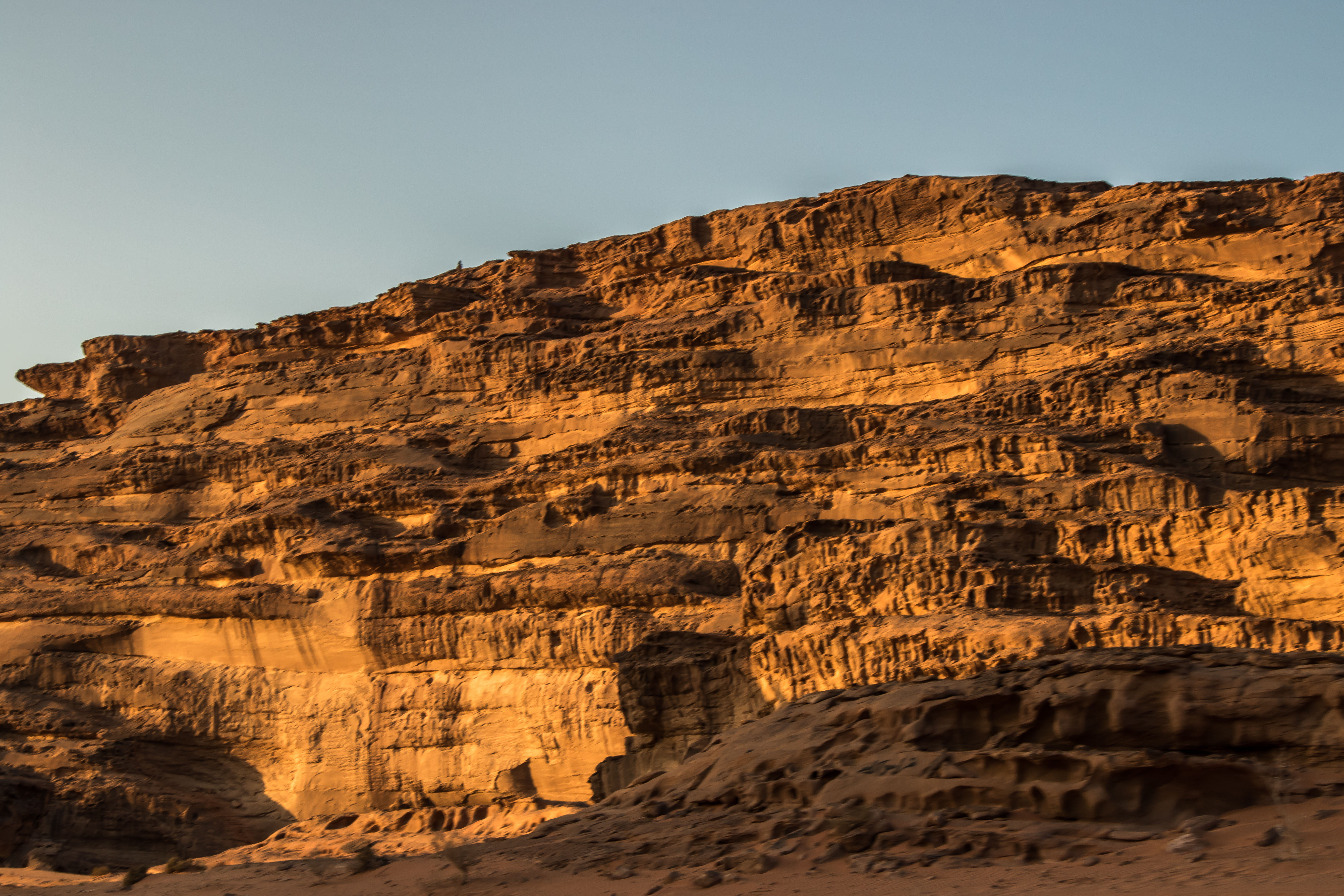
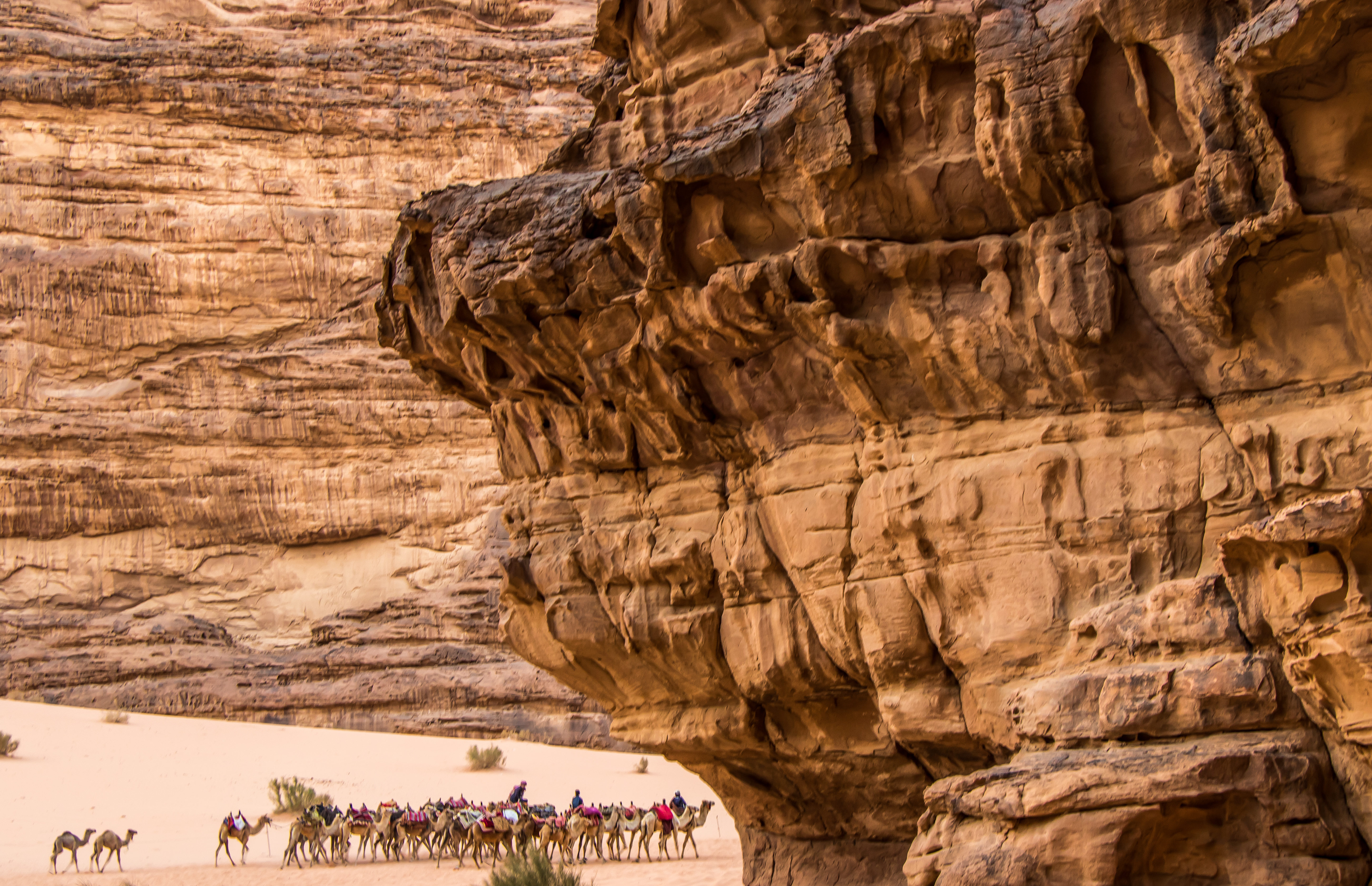
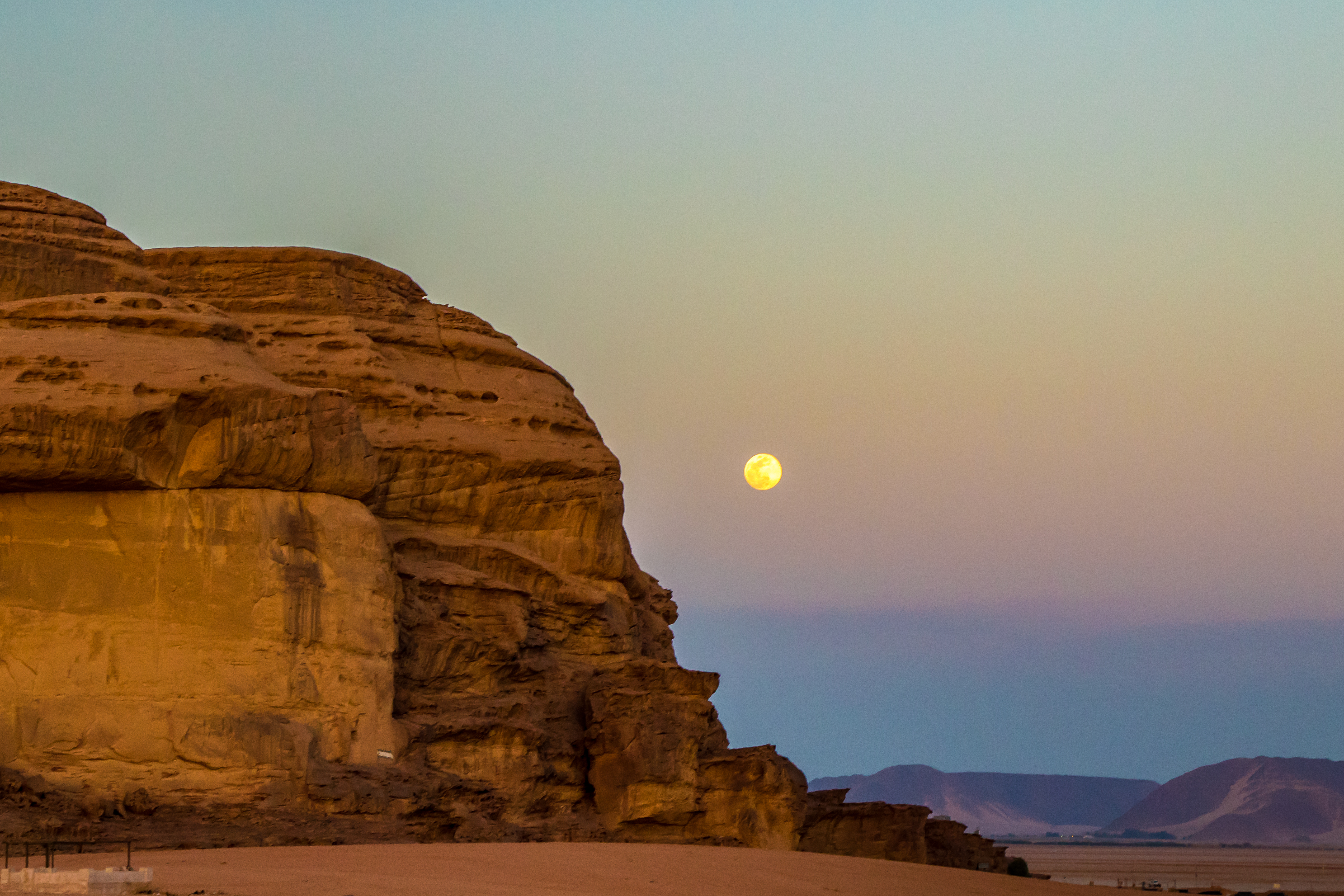
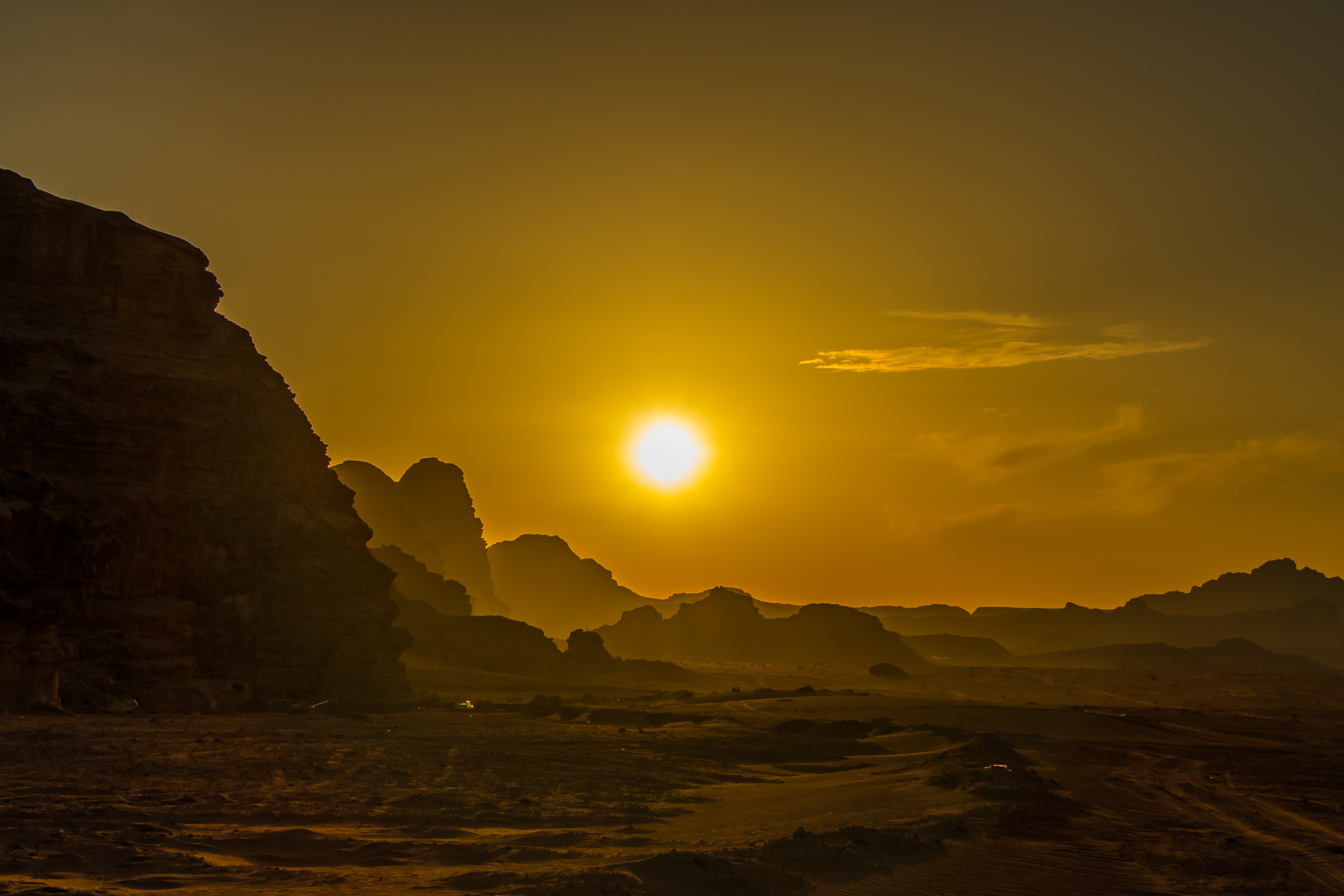
And as we drove around the back of the ‘rock’ to the buses, we were greeted by a giant full moon. Perfect.
Our guide was lovely. A beautiful soul of a person. As we got close to the ship he said he wanted to talk to us. He said .. word to the effect of…. that he didn’t like to be political, but… we had all had a wonderful day. Had all got along well. Had all respected each other. He then said that both he and the driver were Muslim. That that was their faith. BUT that they were not terrorists. We had all been able to see that. He just wanted to help people seperate the Muslim/terrorist thing in their minds.
I was so glad he did this. It is such an important concept and it was great to hear it while travelling
in a Muslim country. He was very emotional as he was saying it.
13 hours of amazing stuff. We all slept well that night.
Sail away was at 11pm but we didn’t leave until well after midnight.
Then some more sea days.
Next – Suez Canal